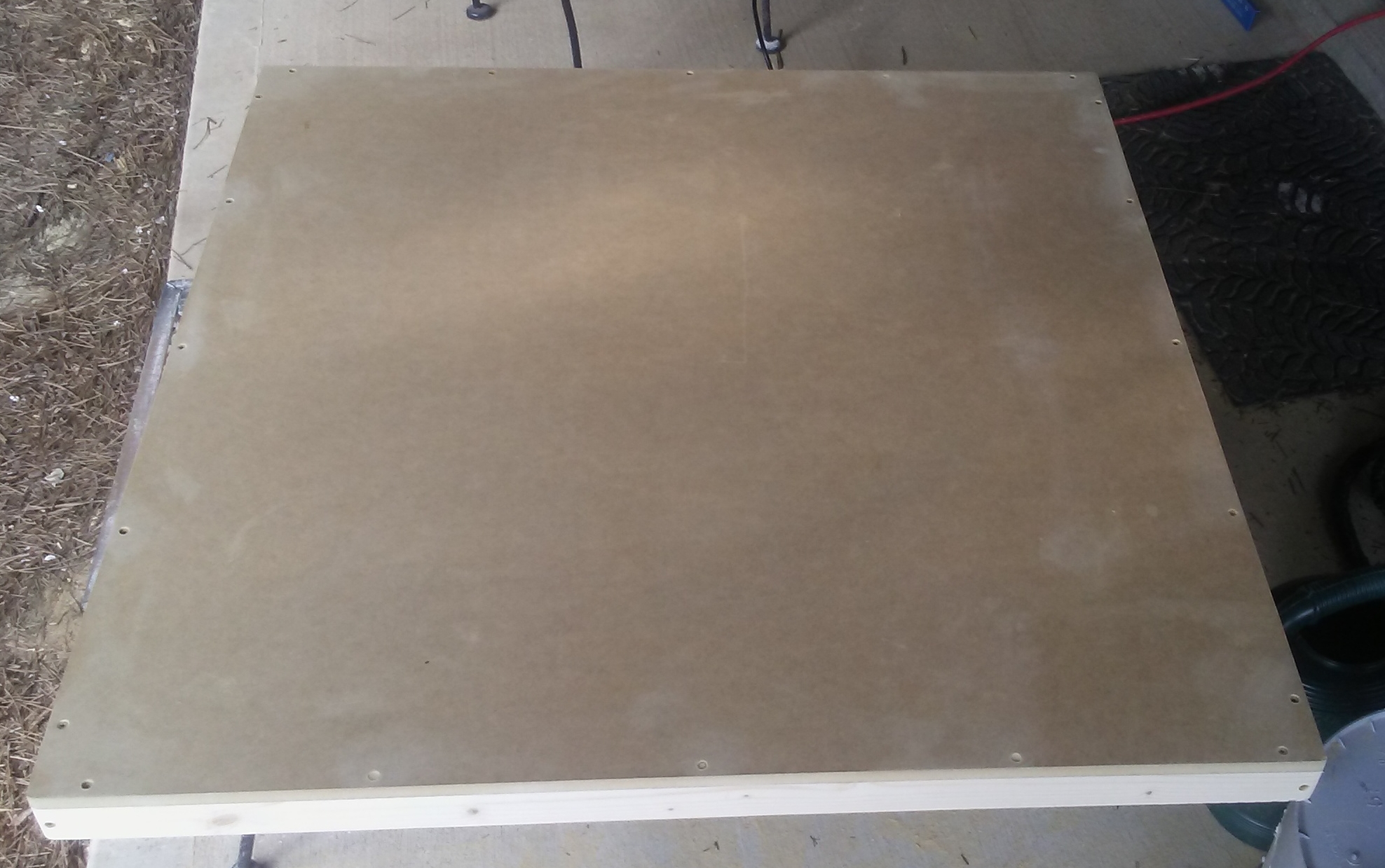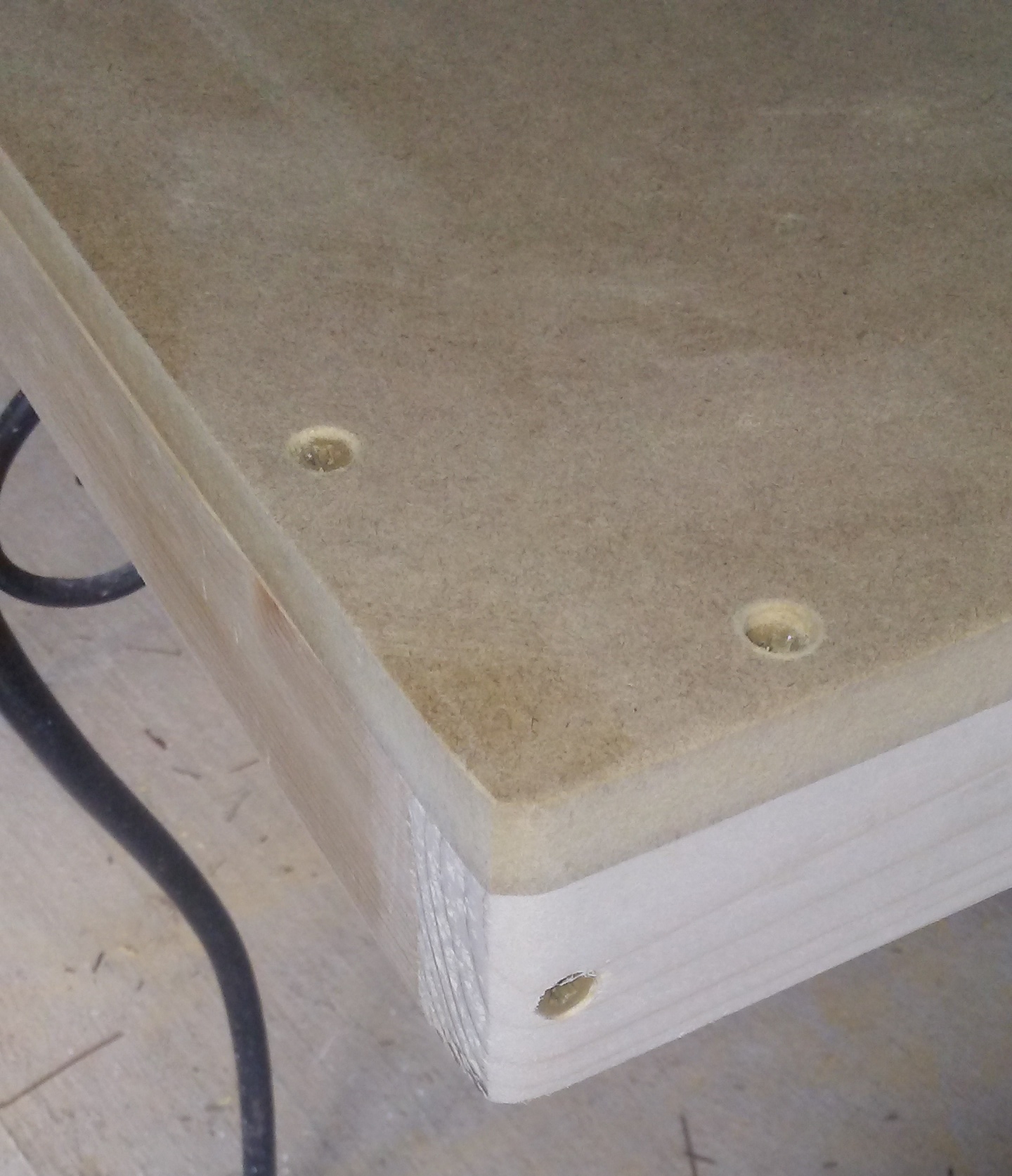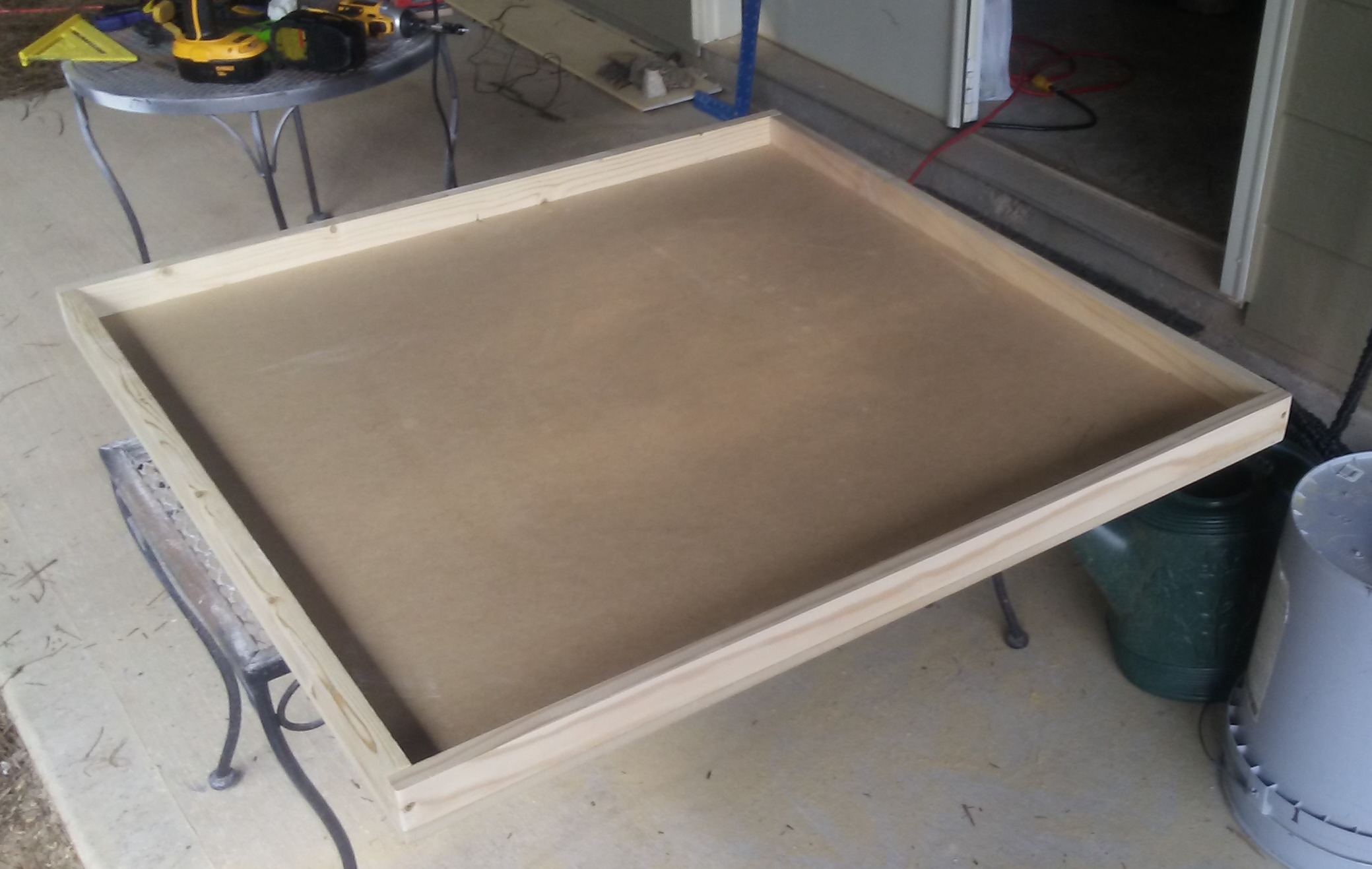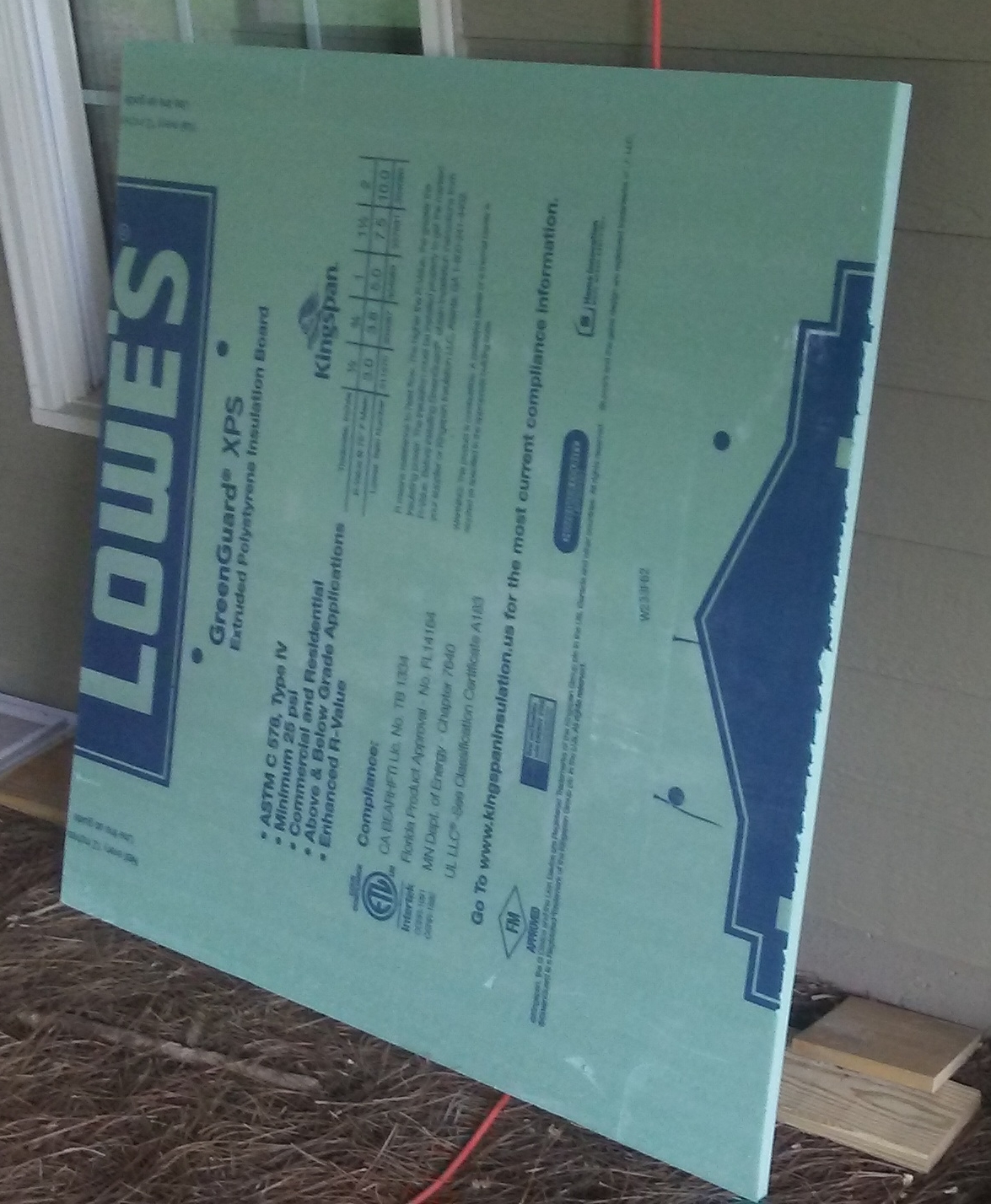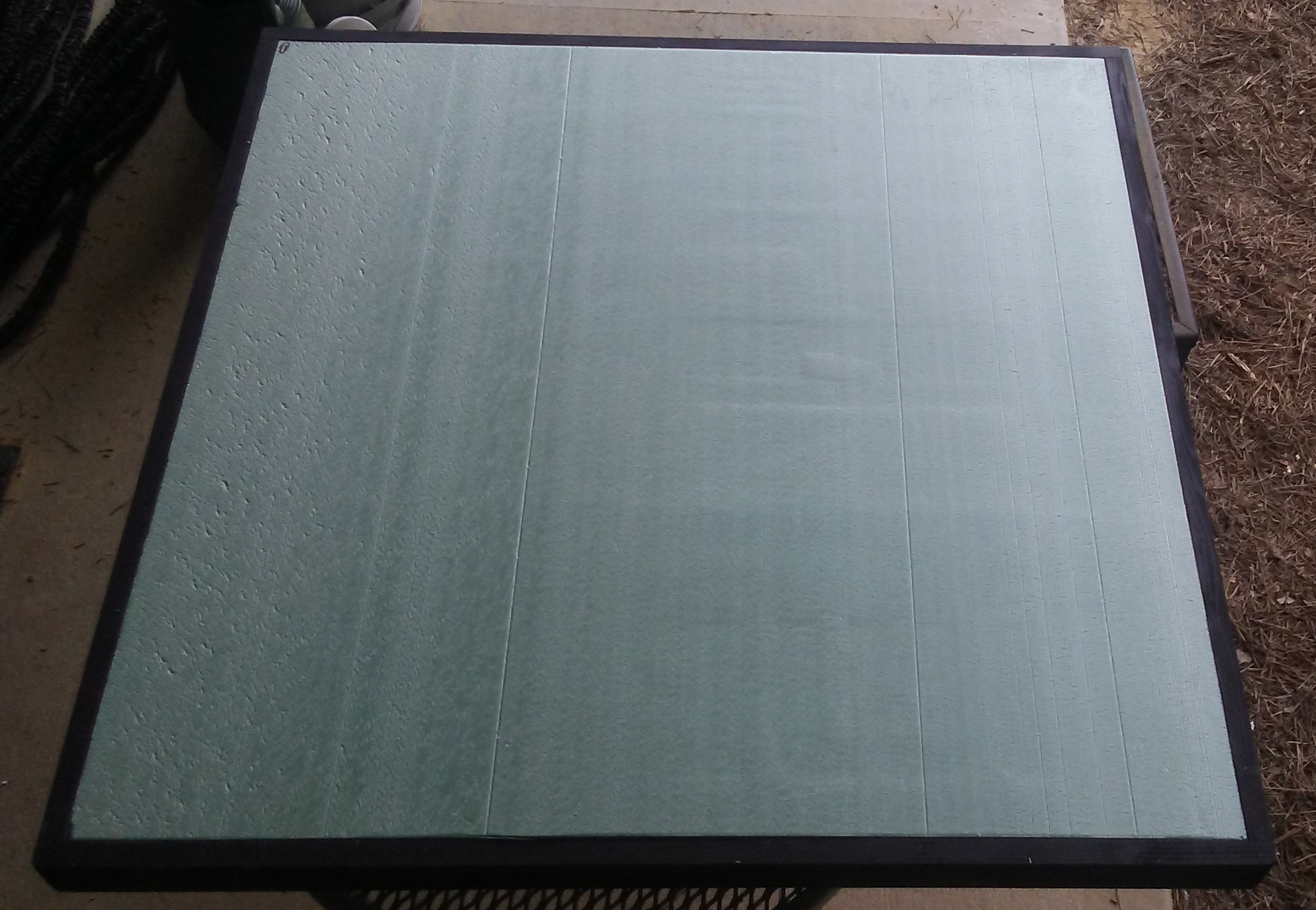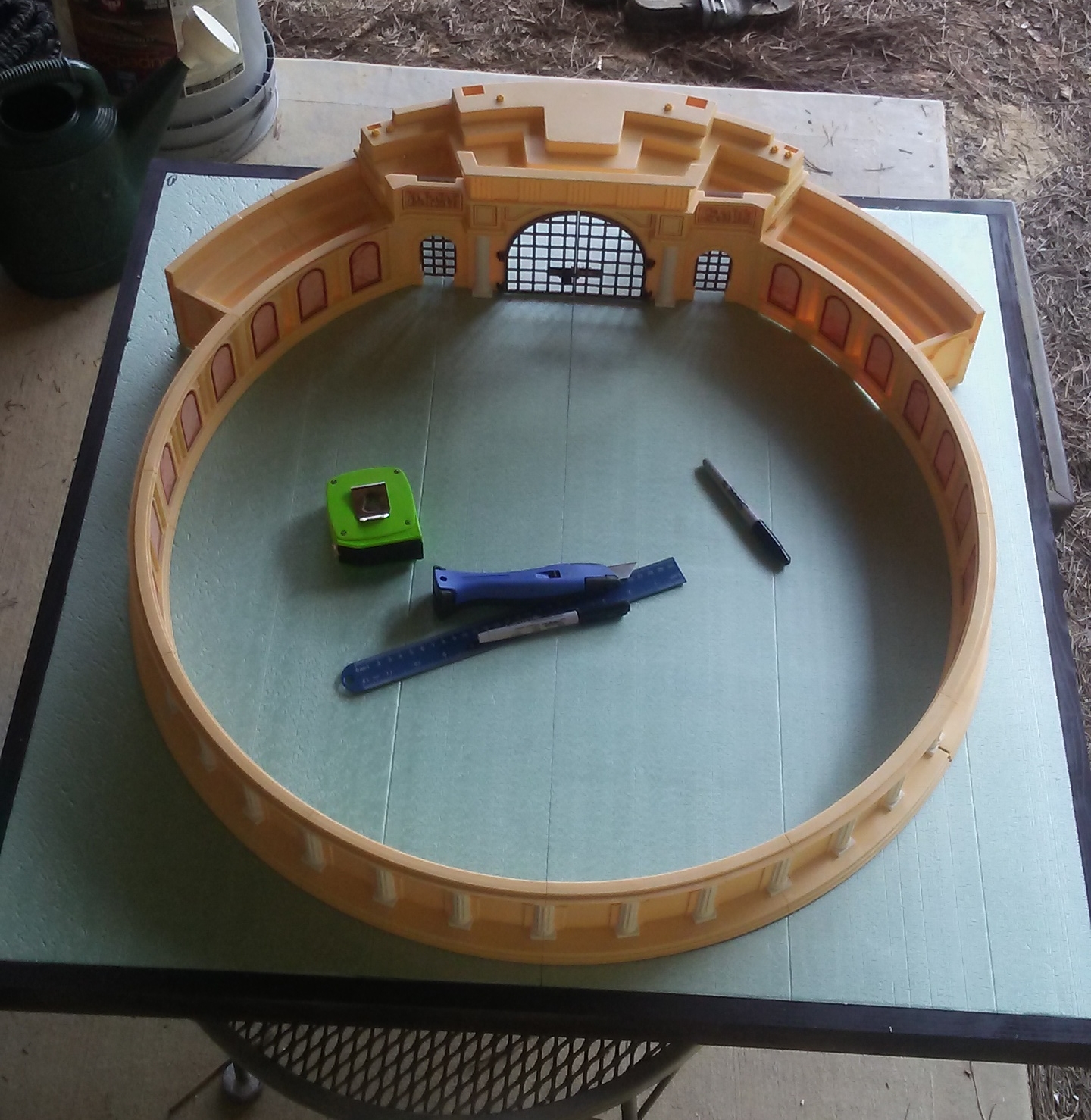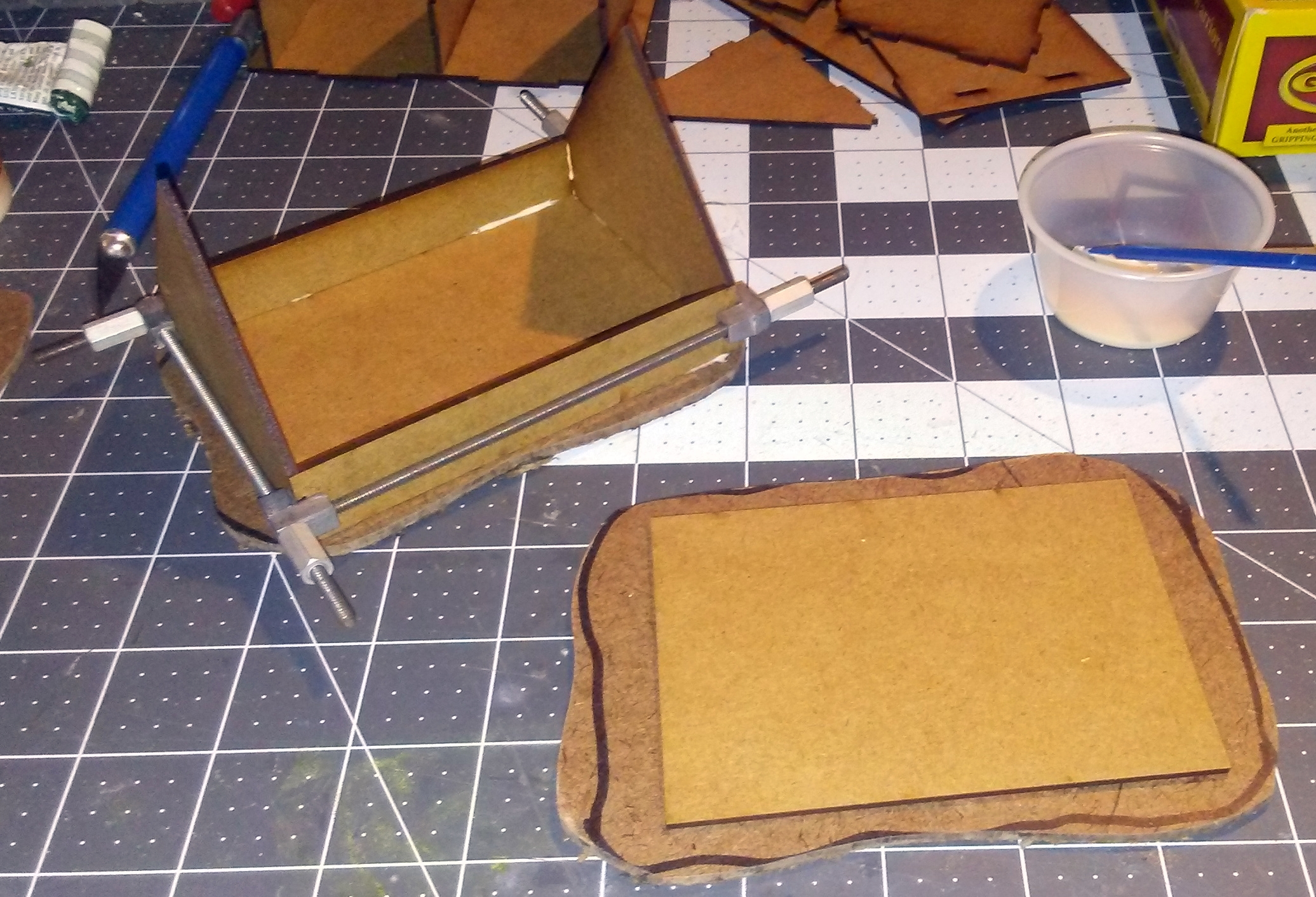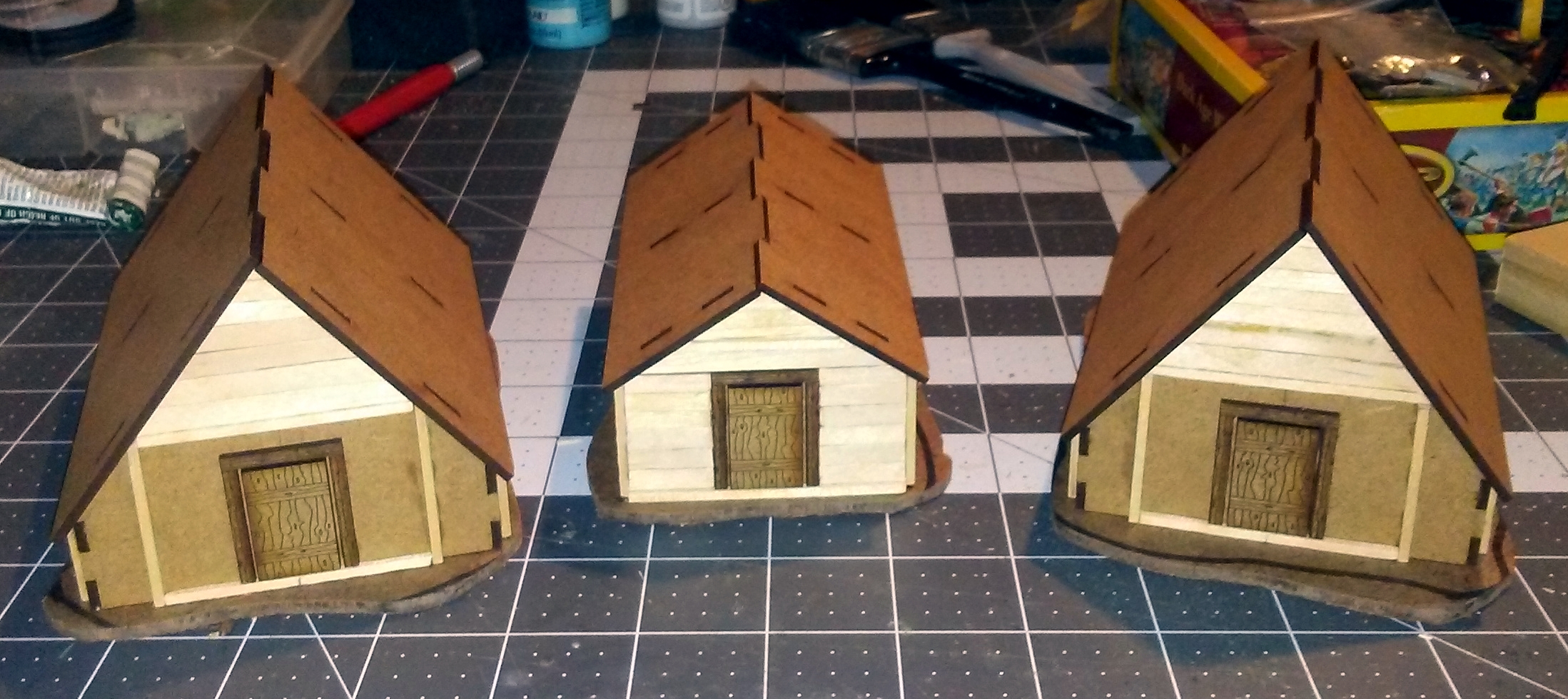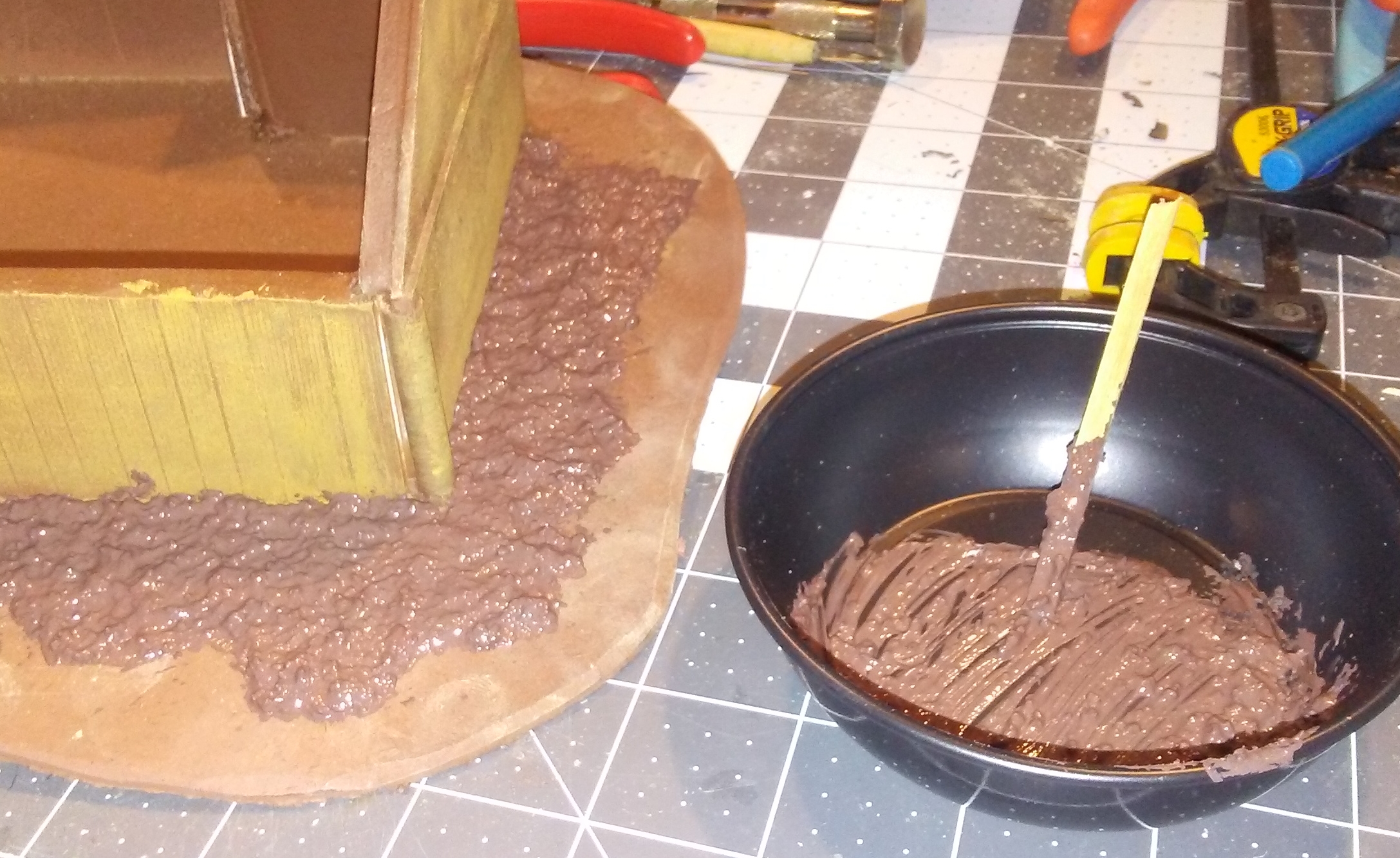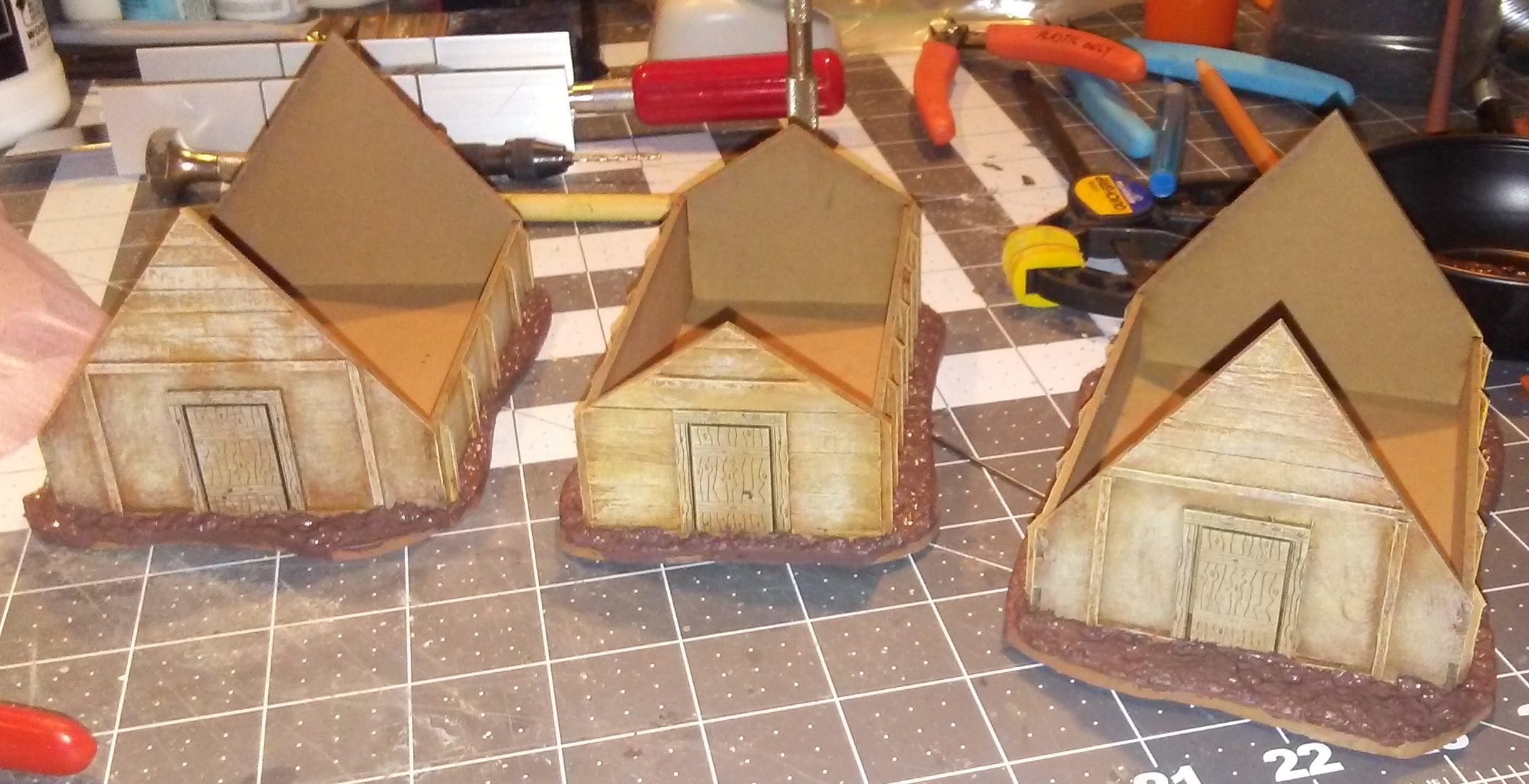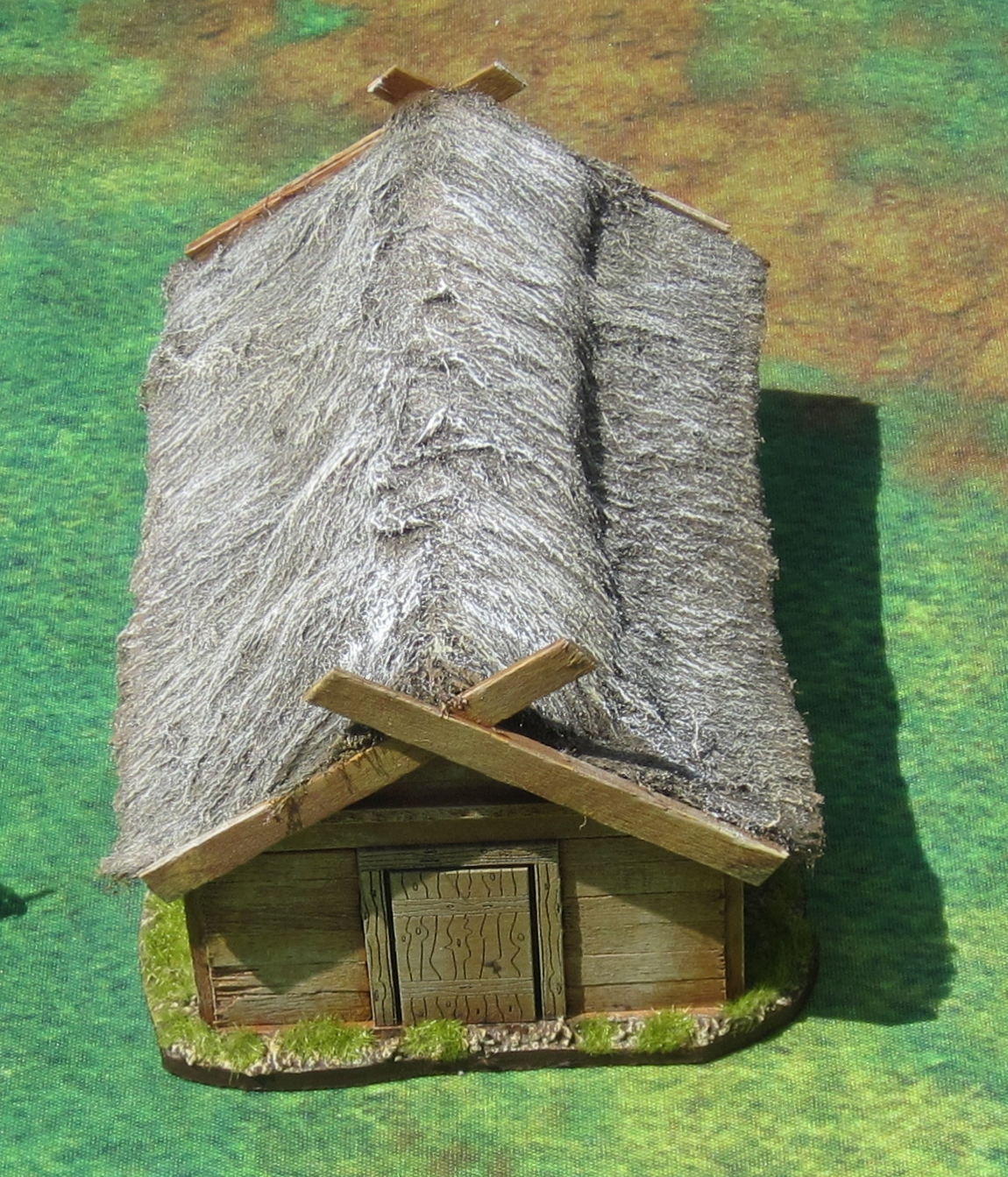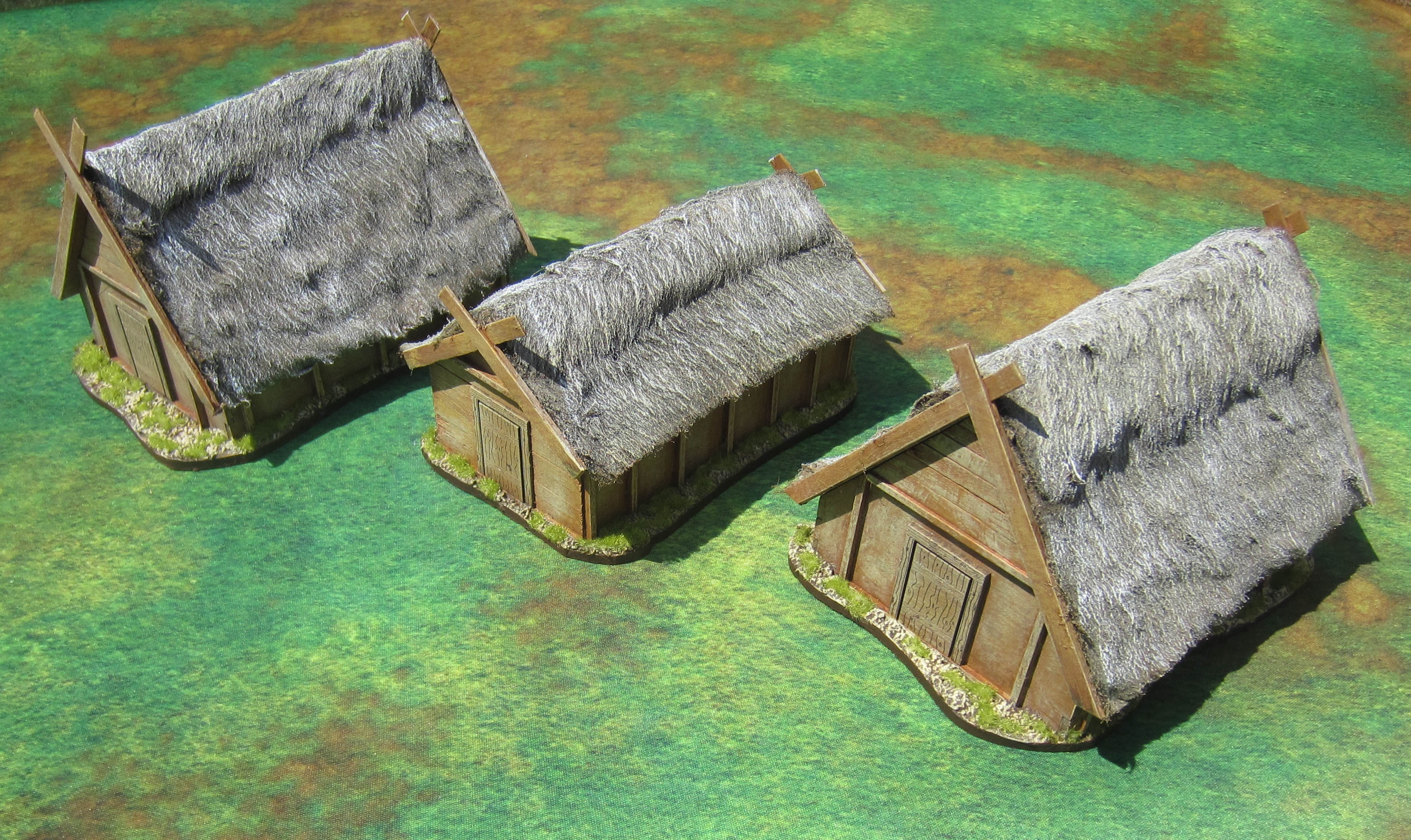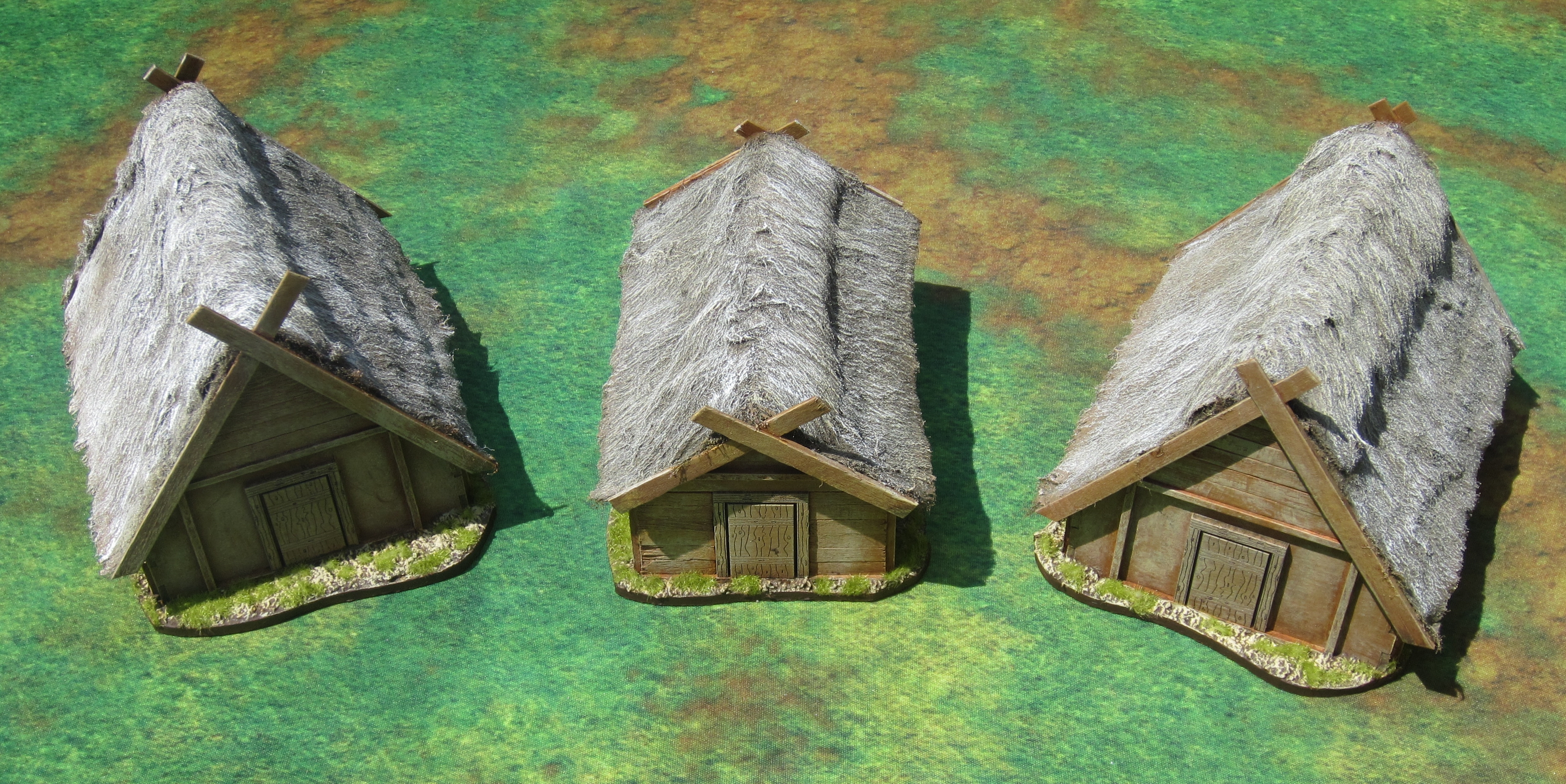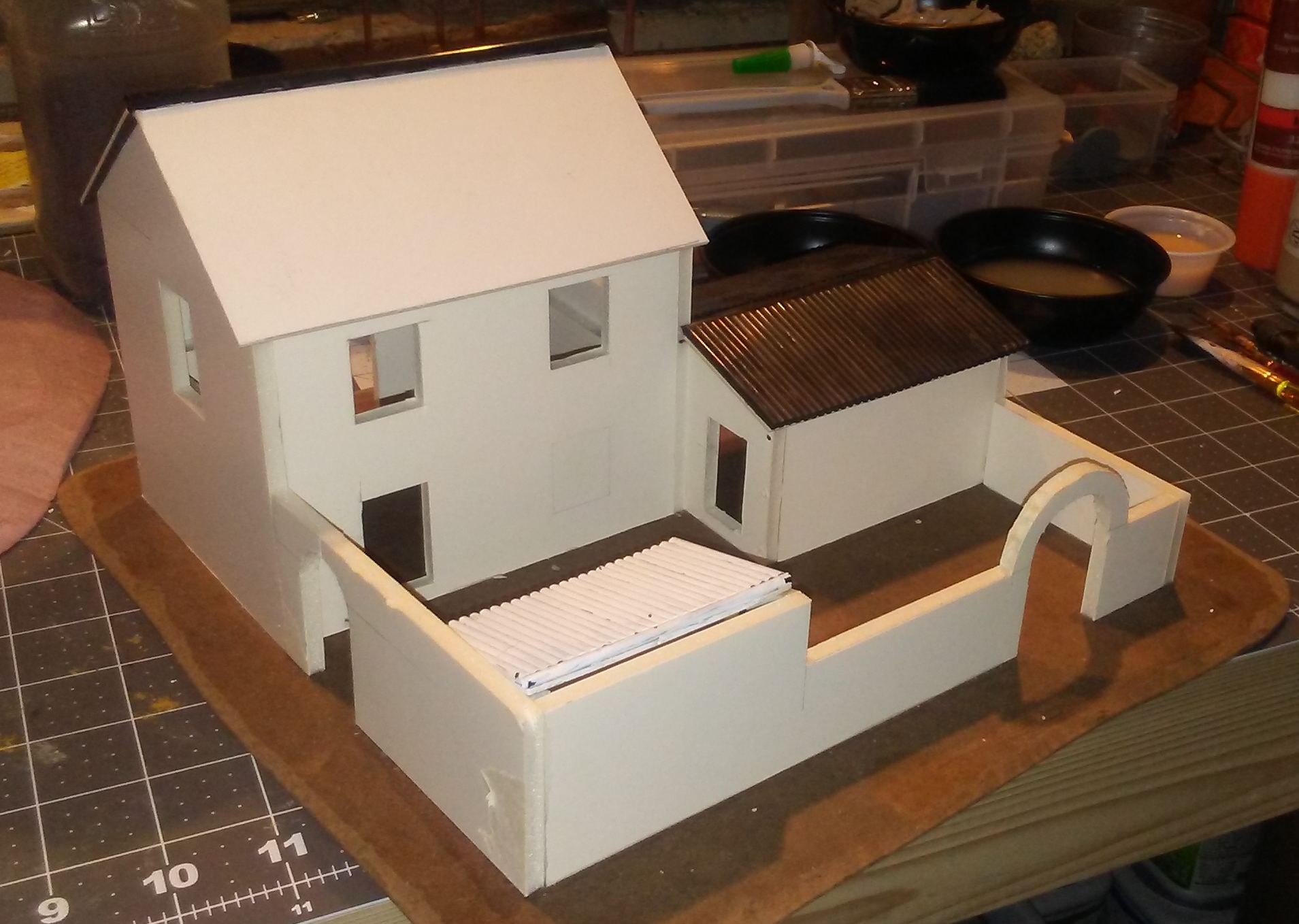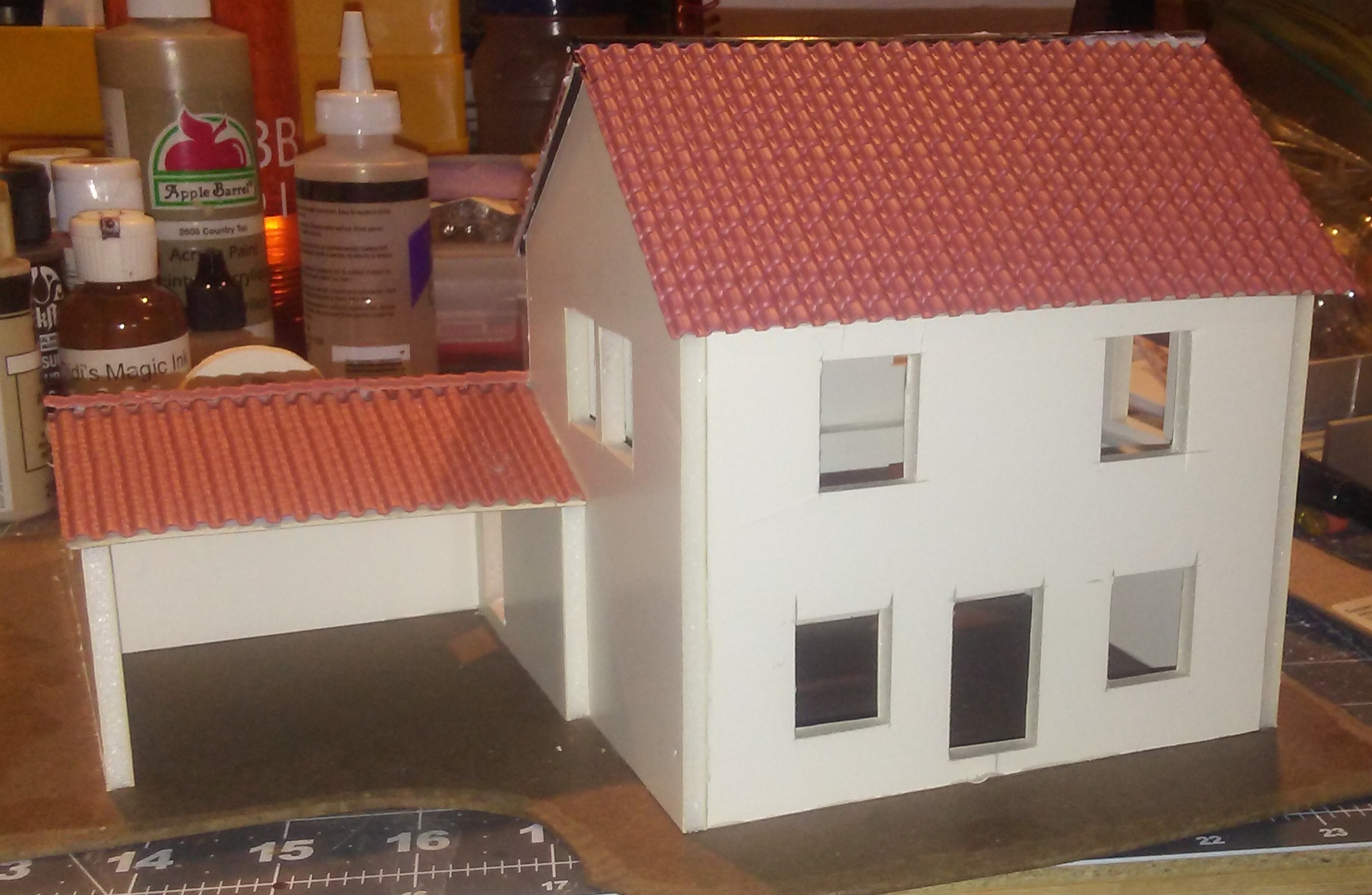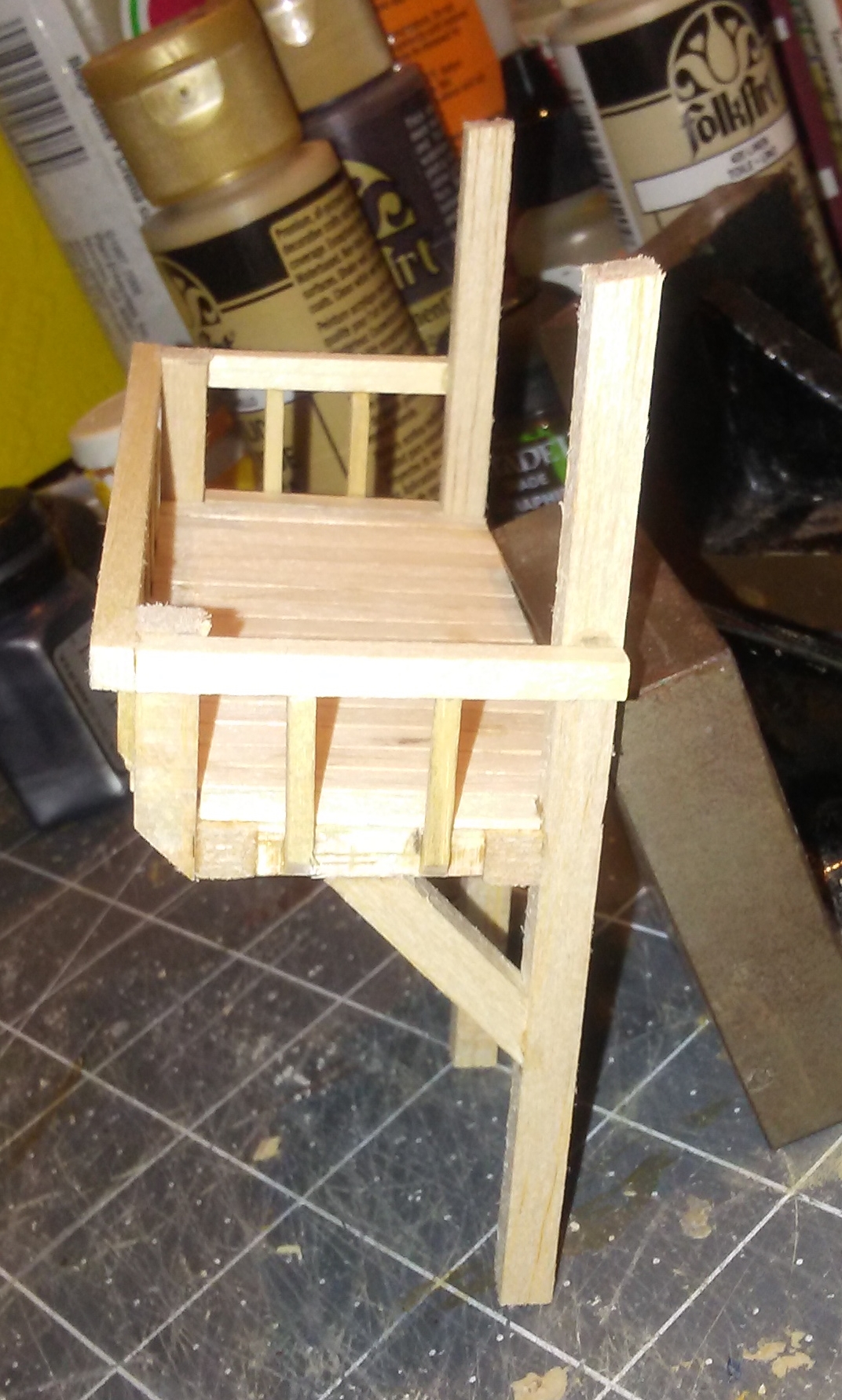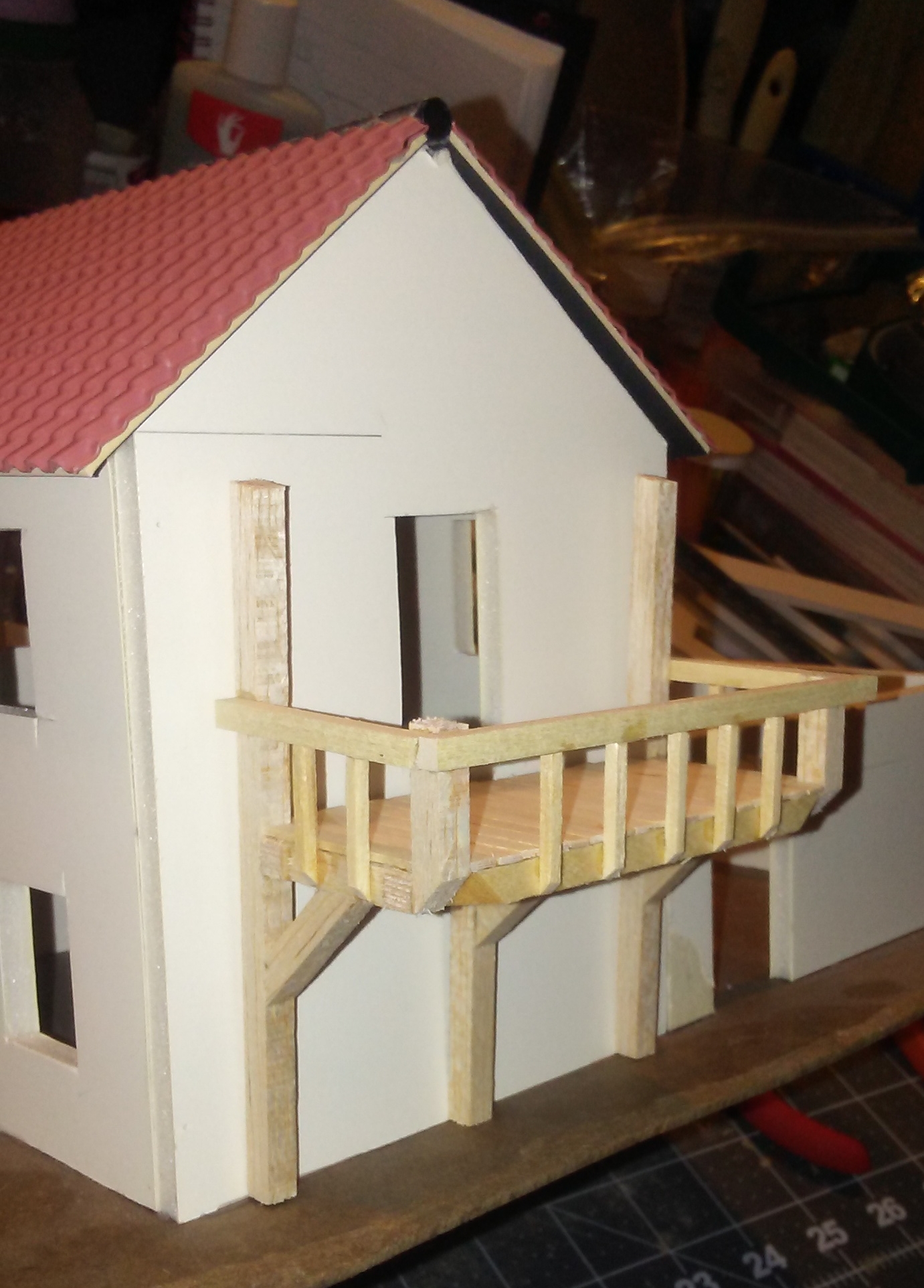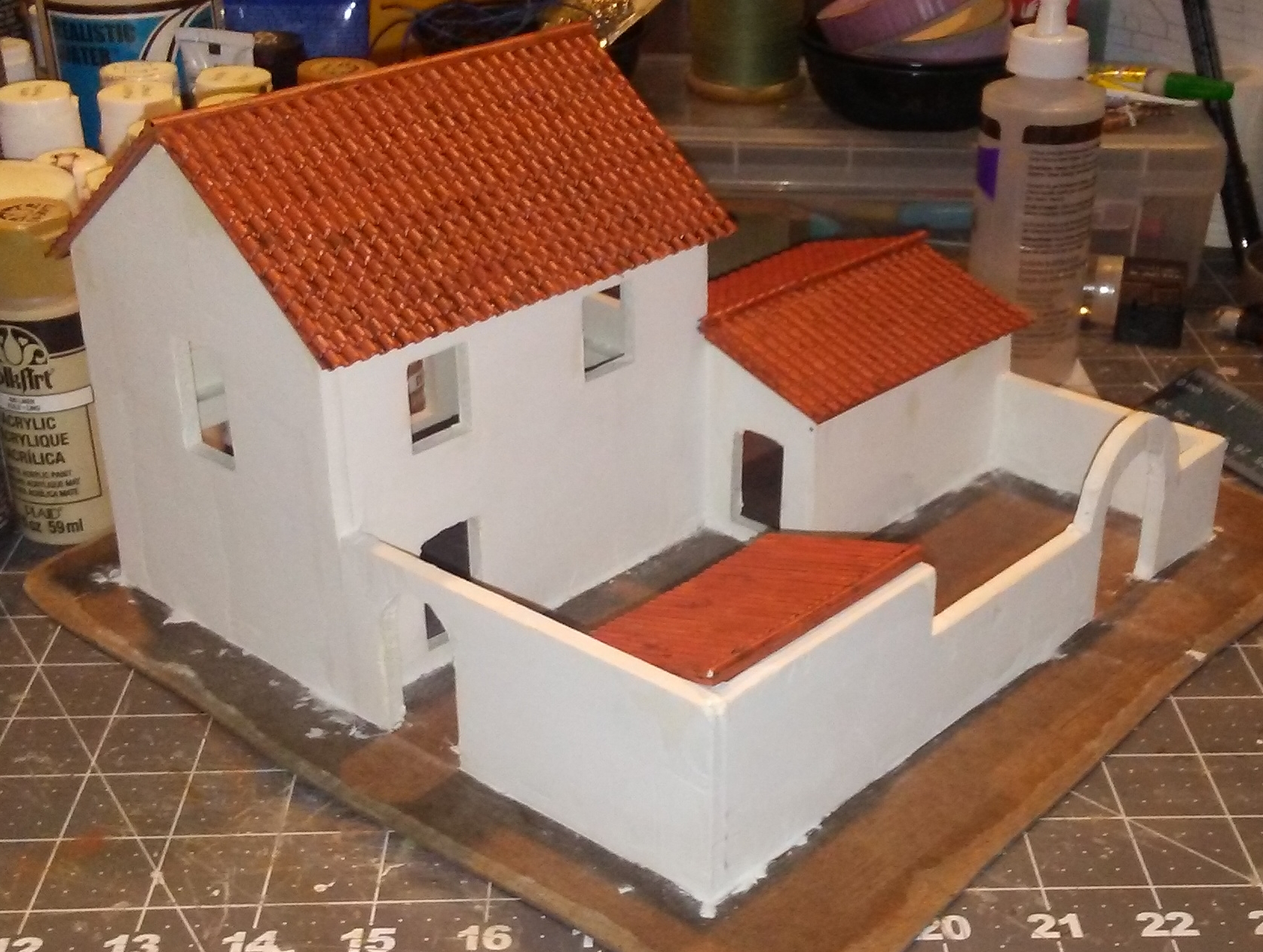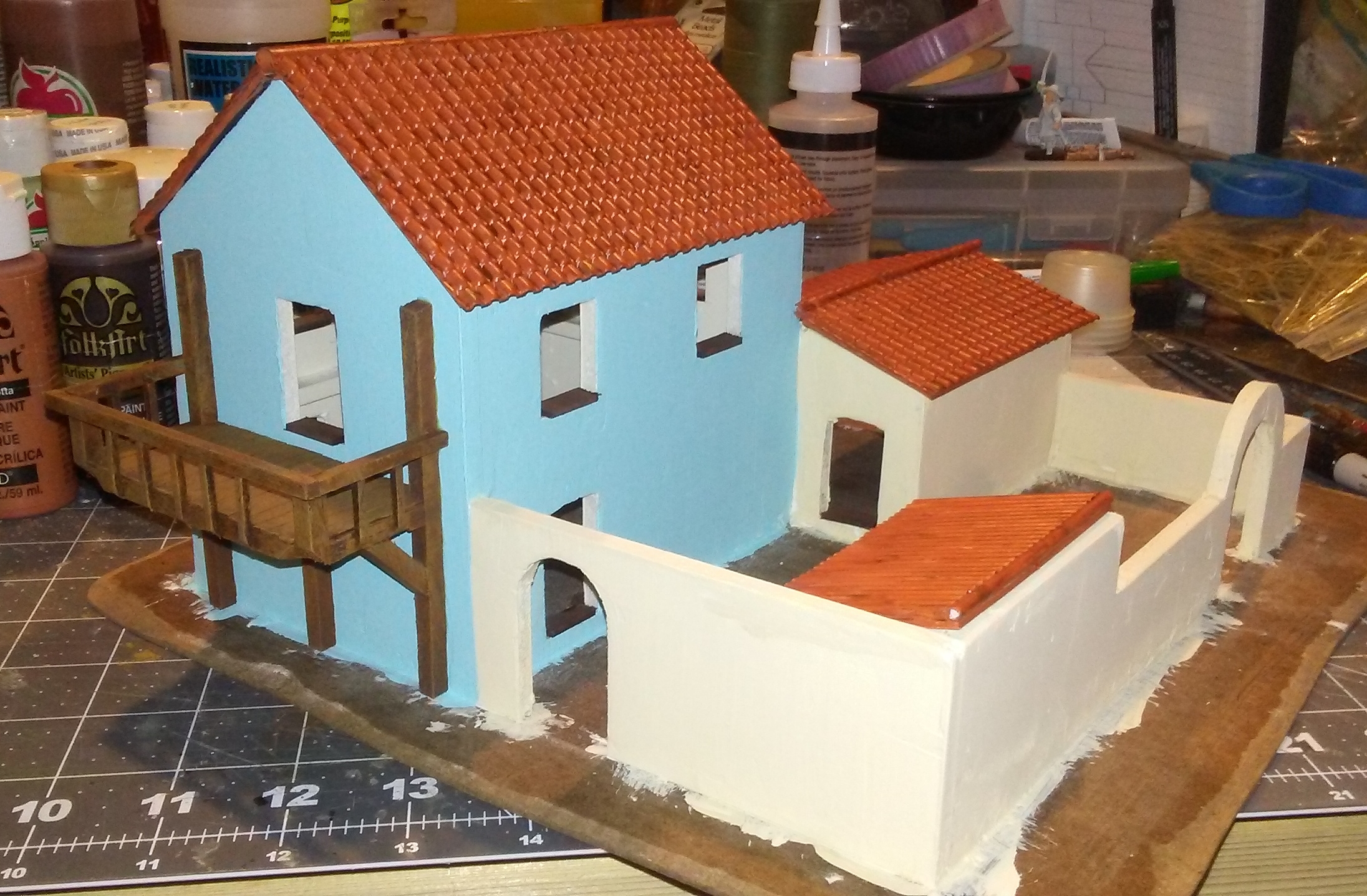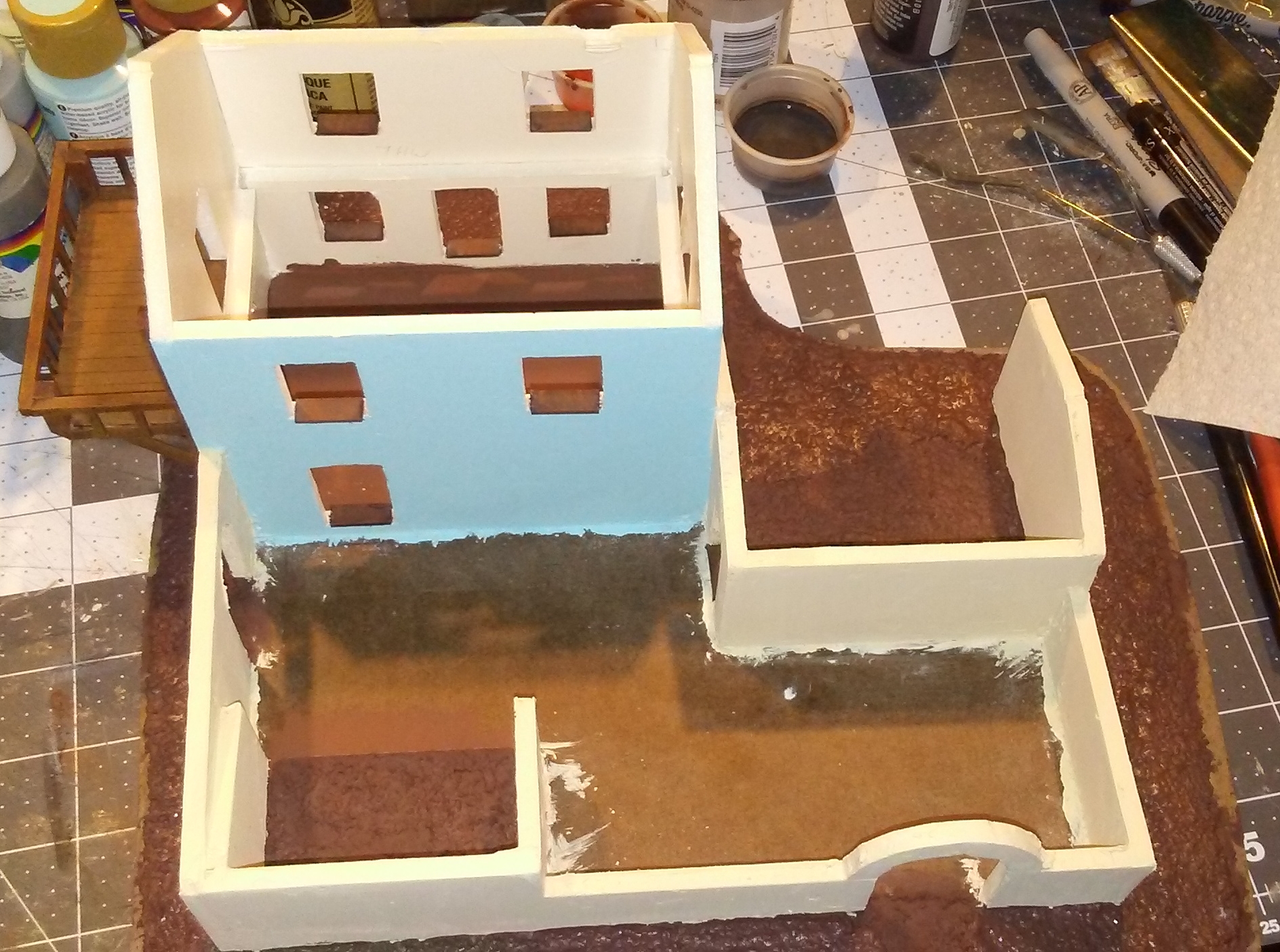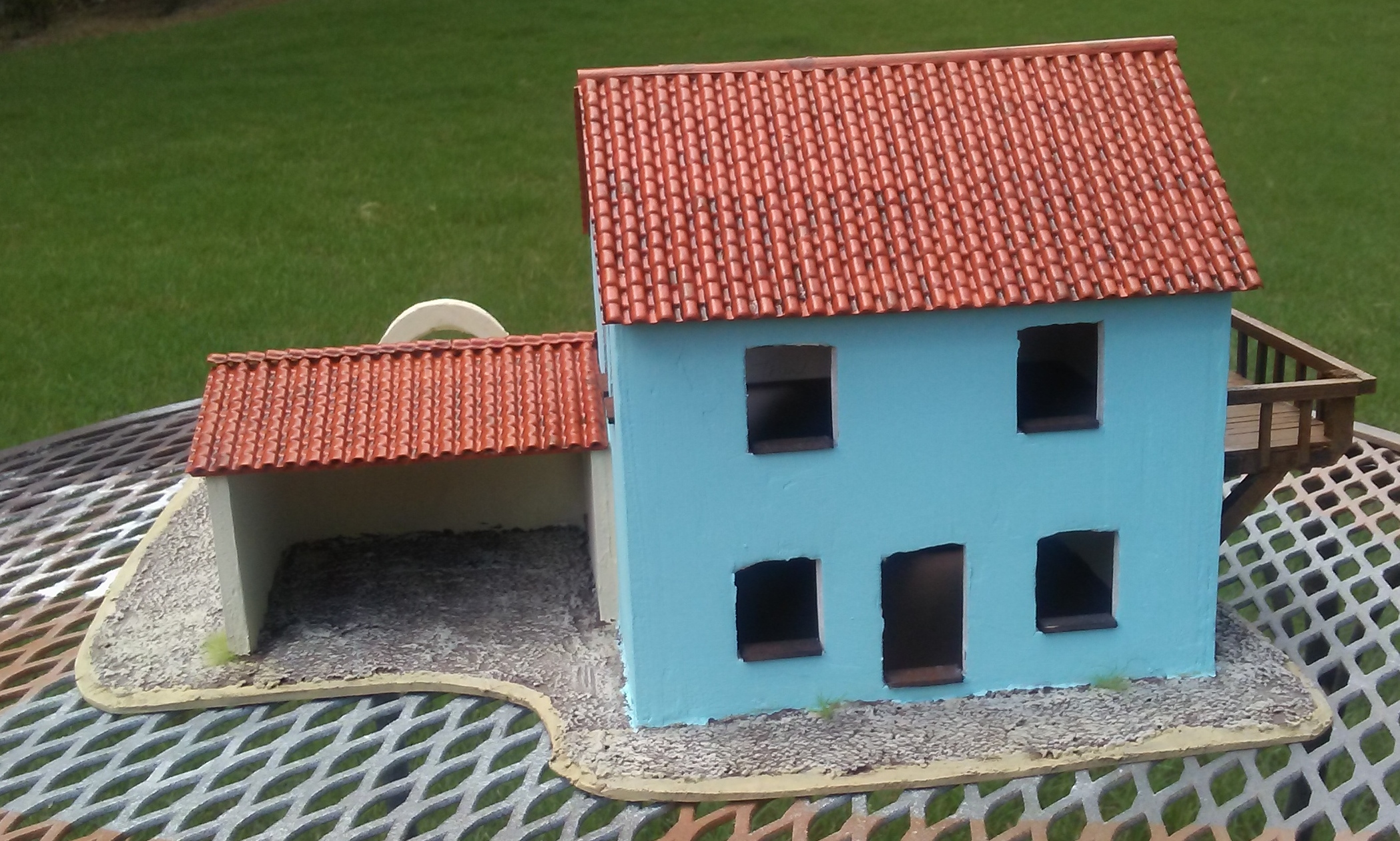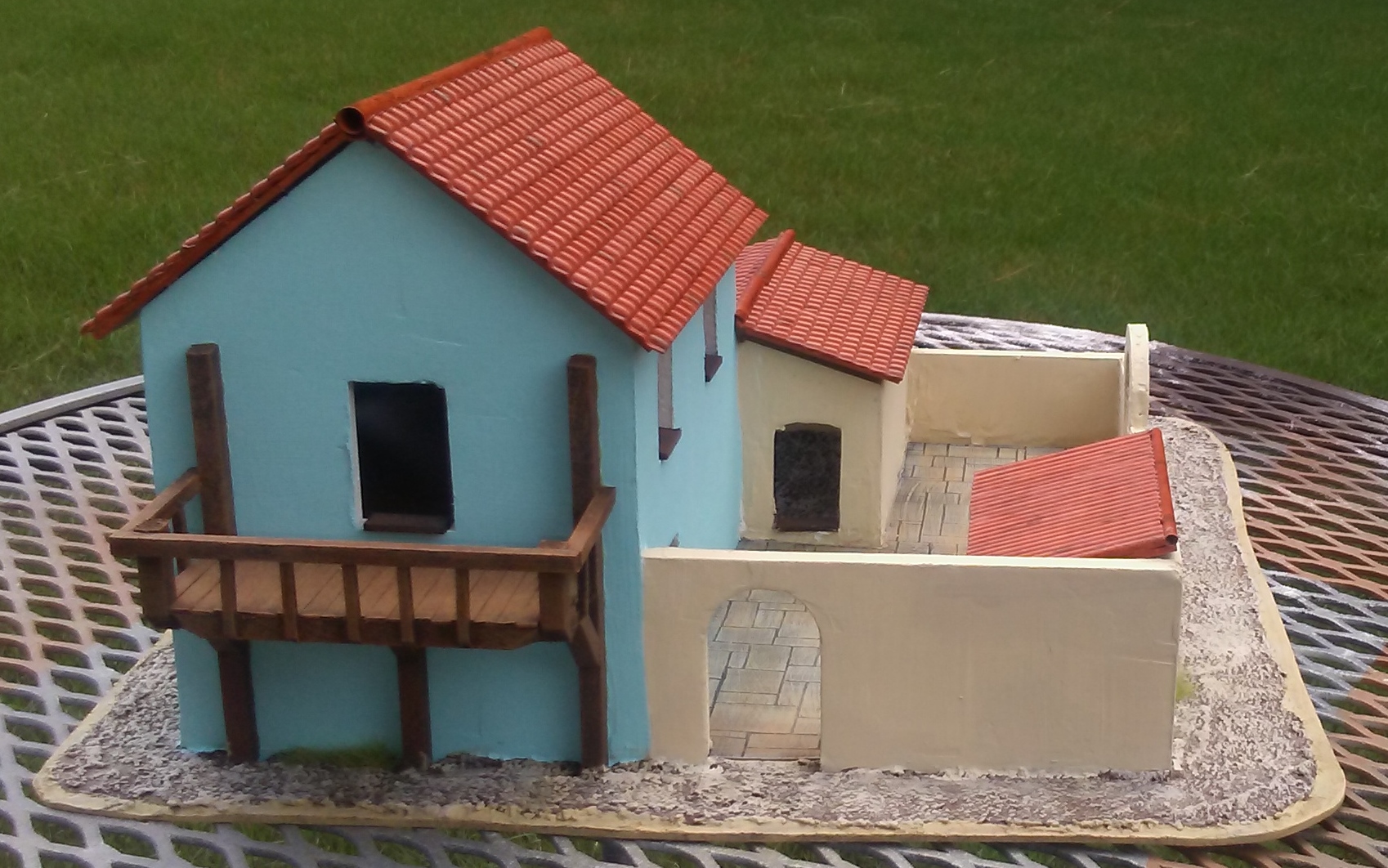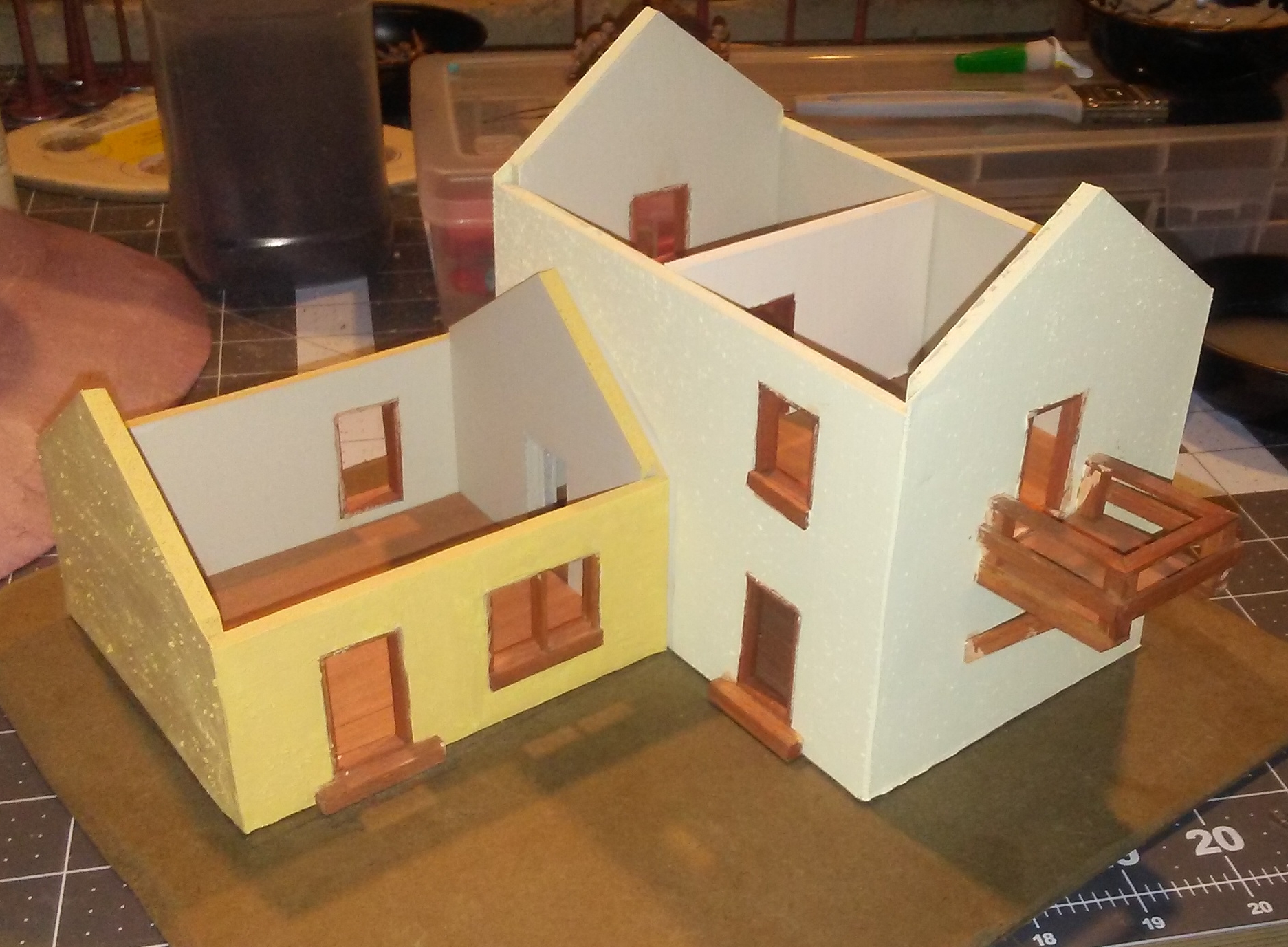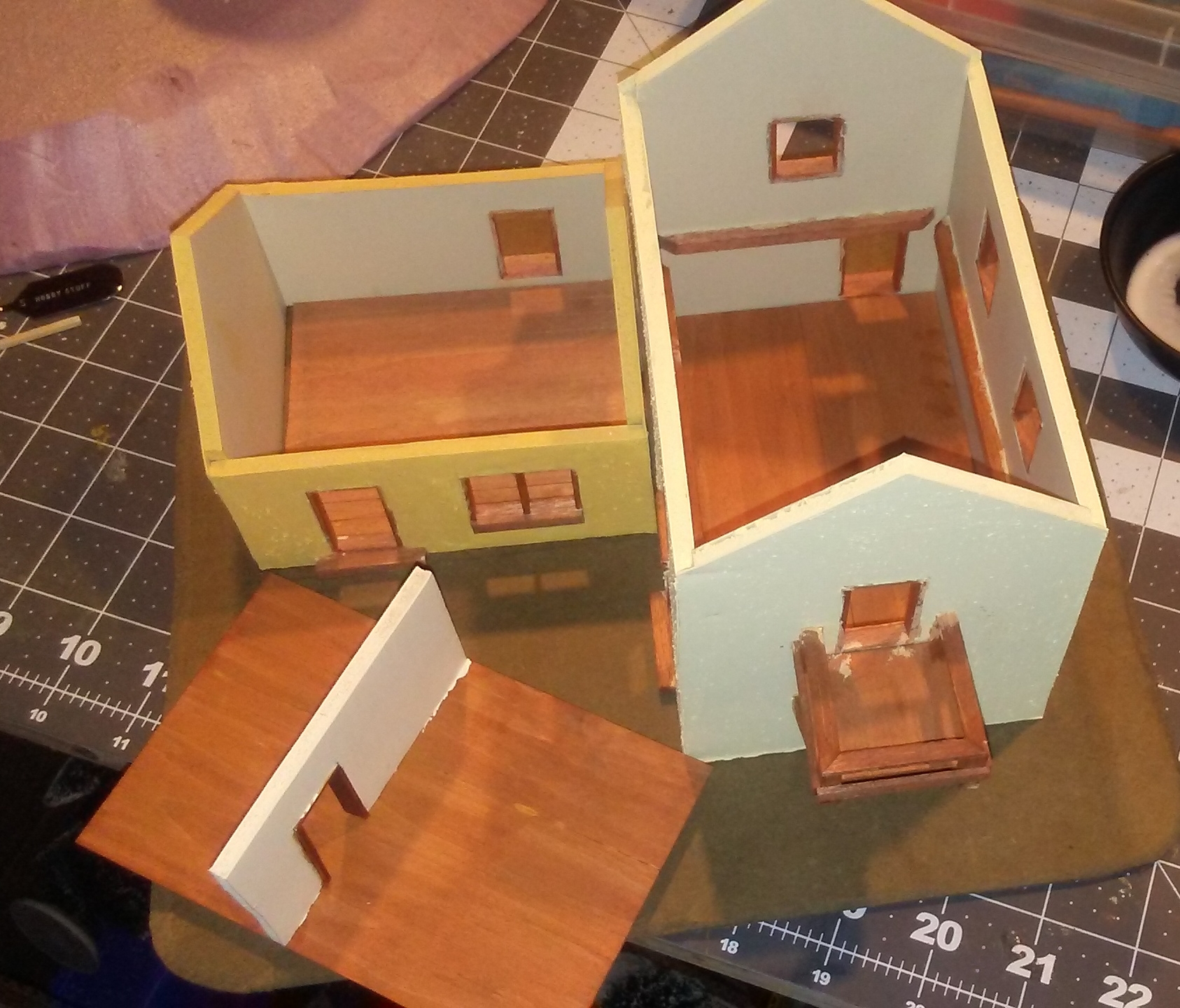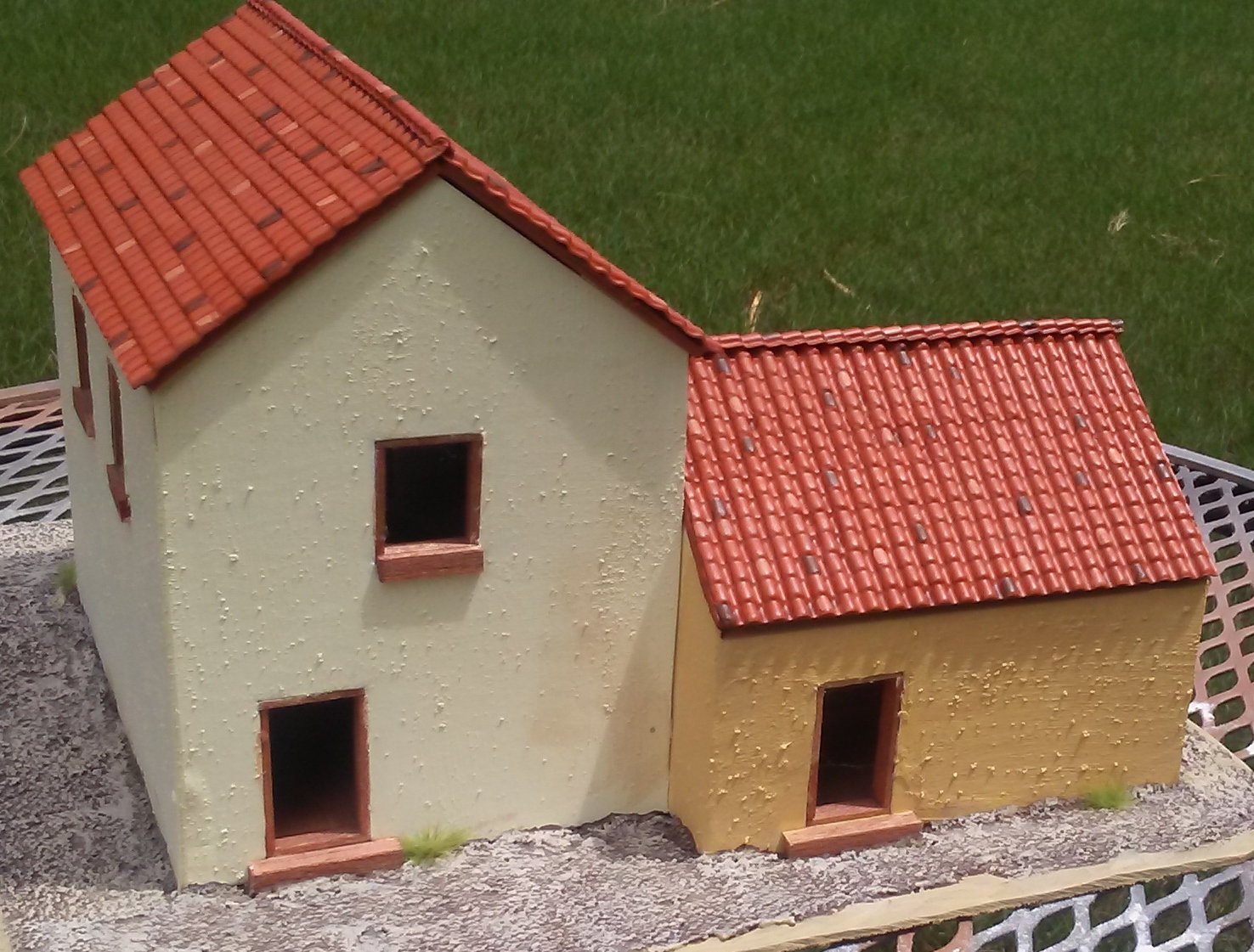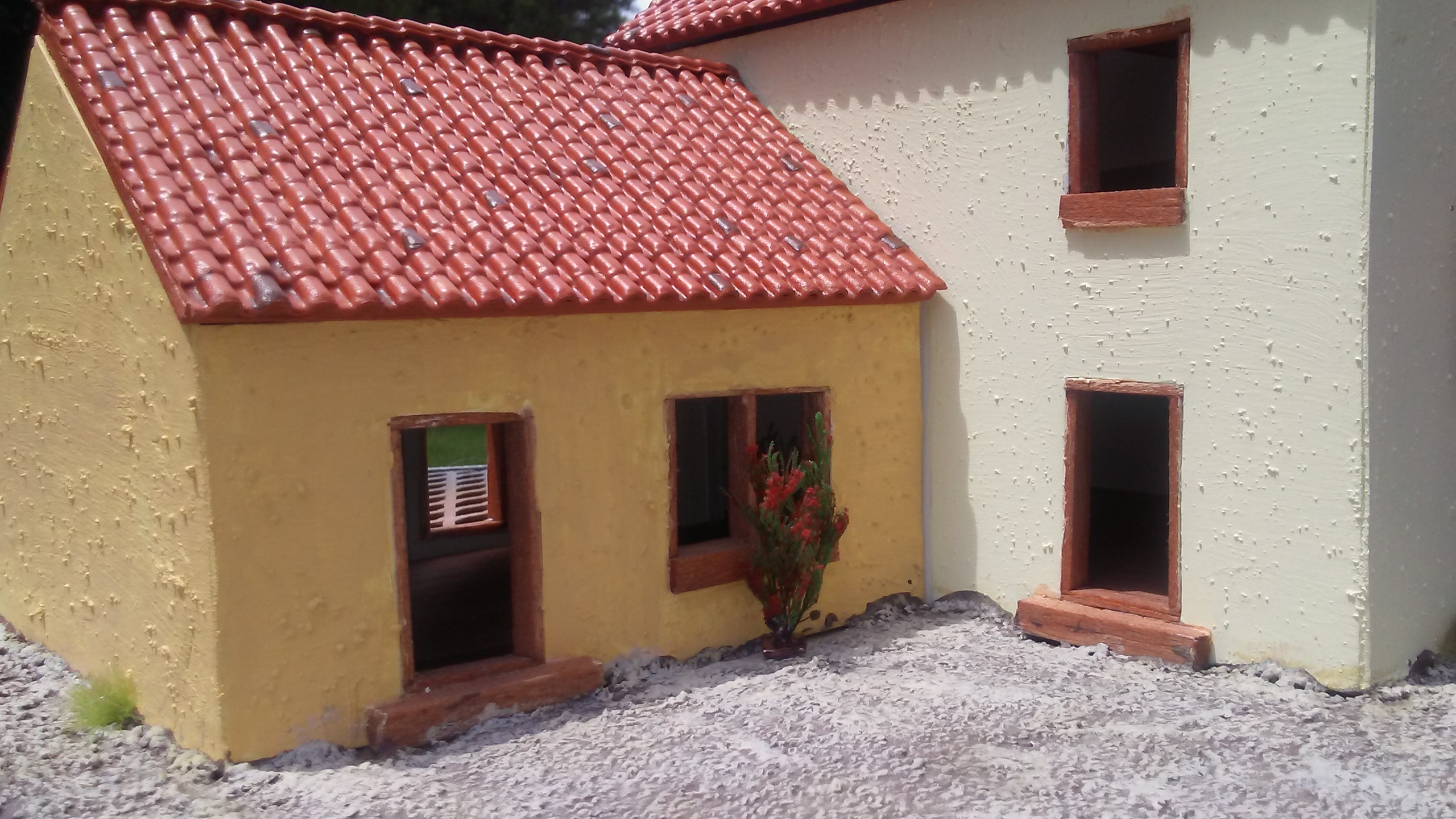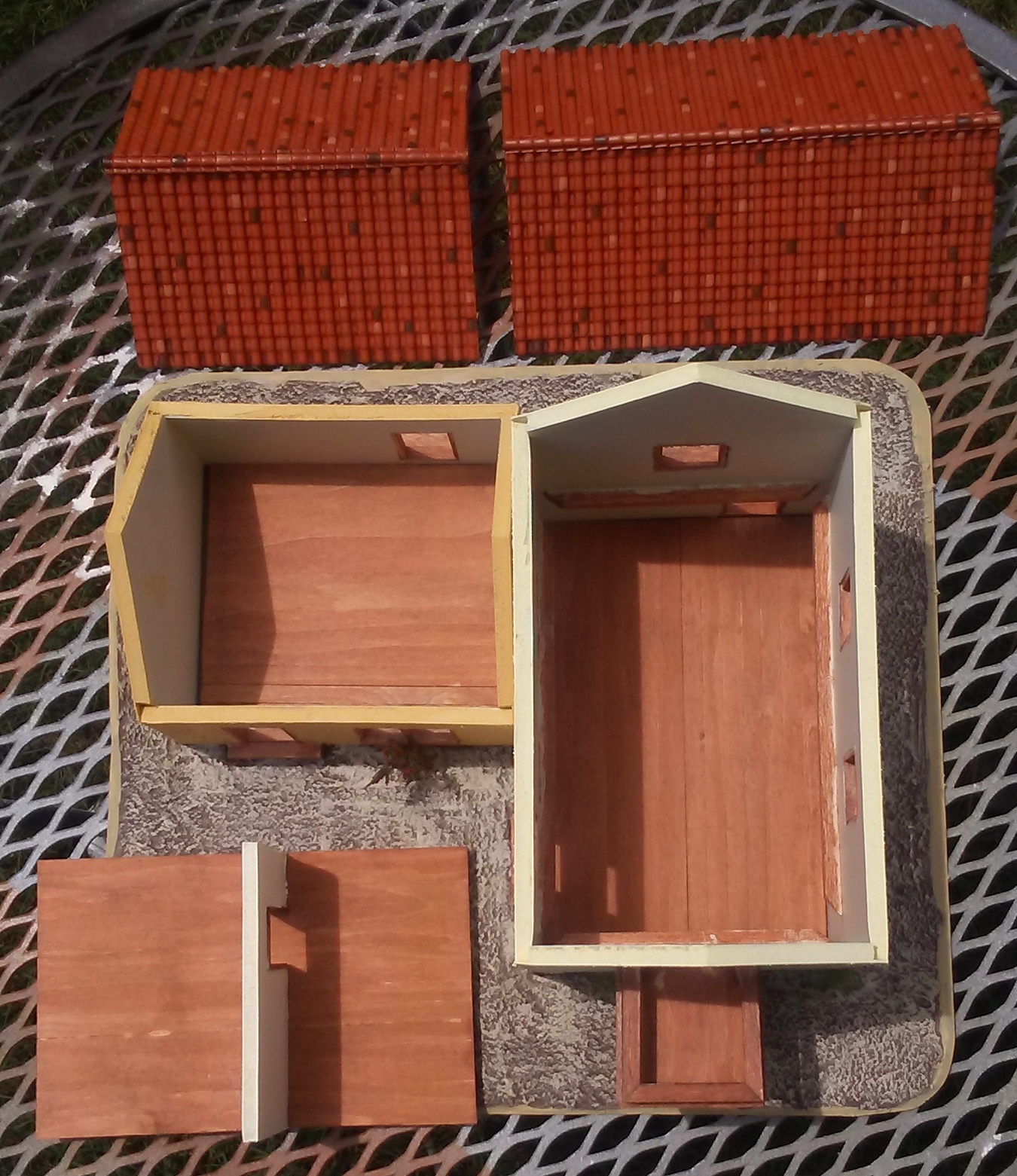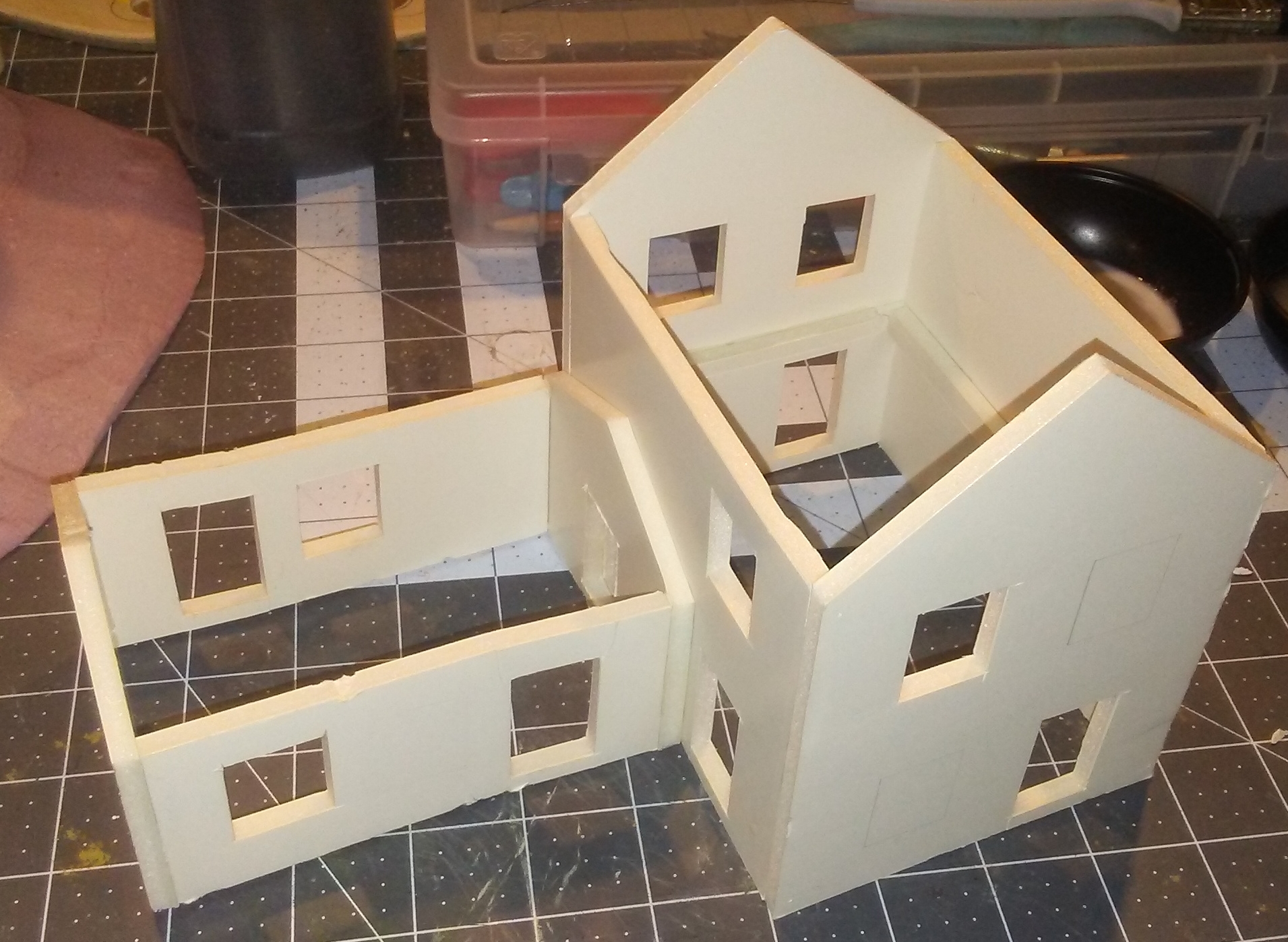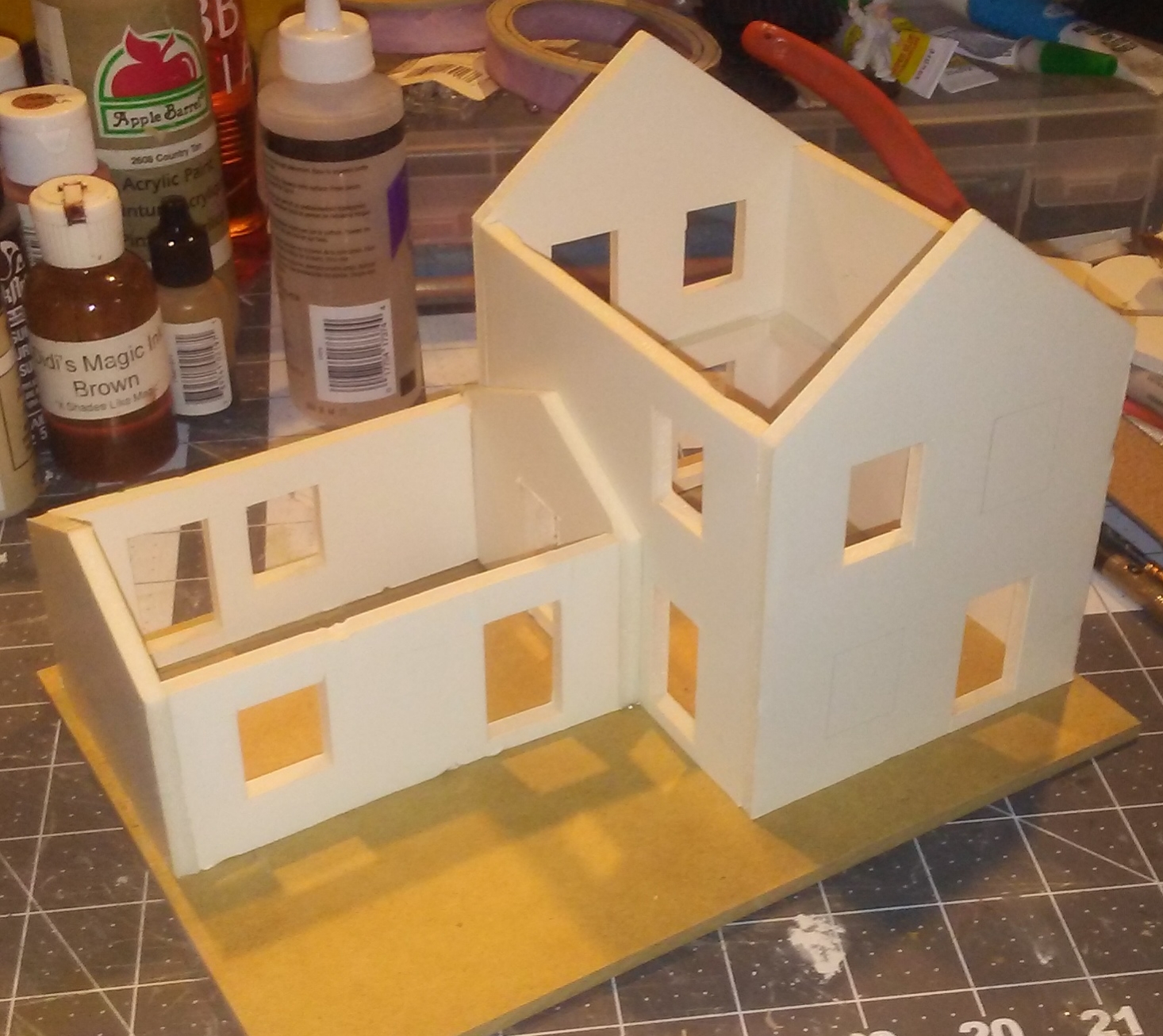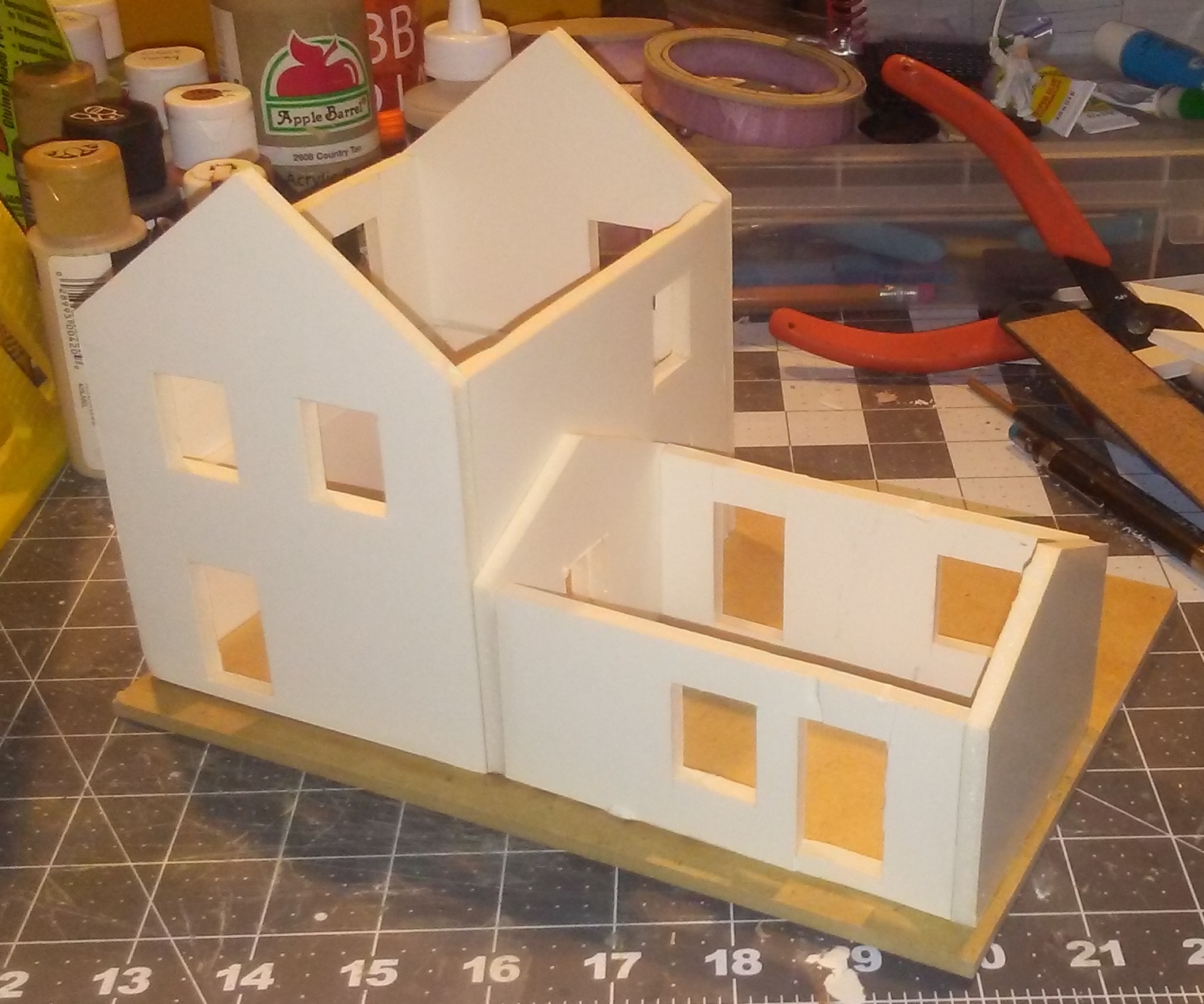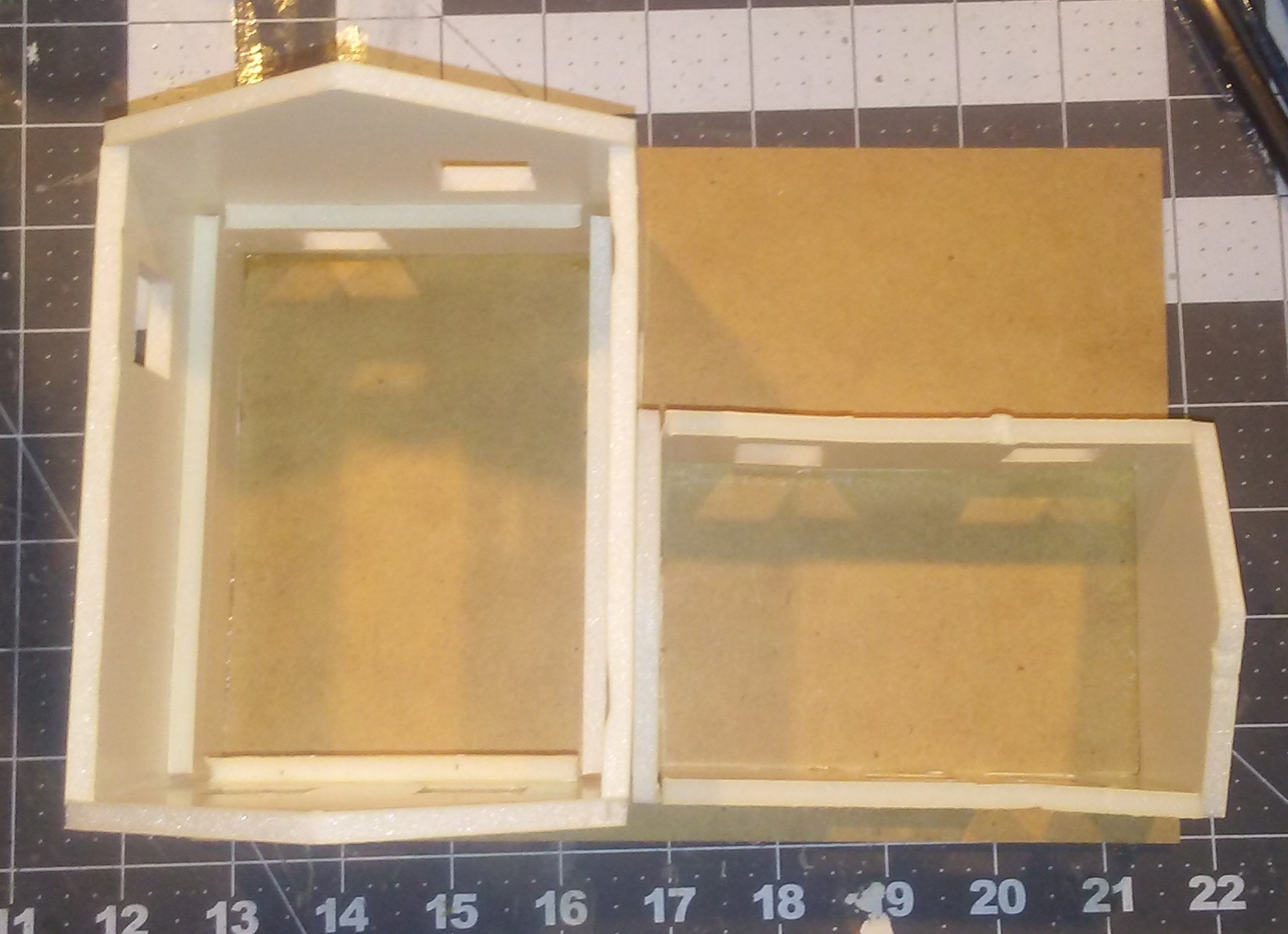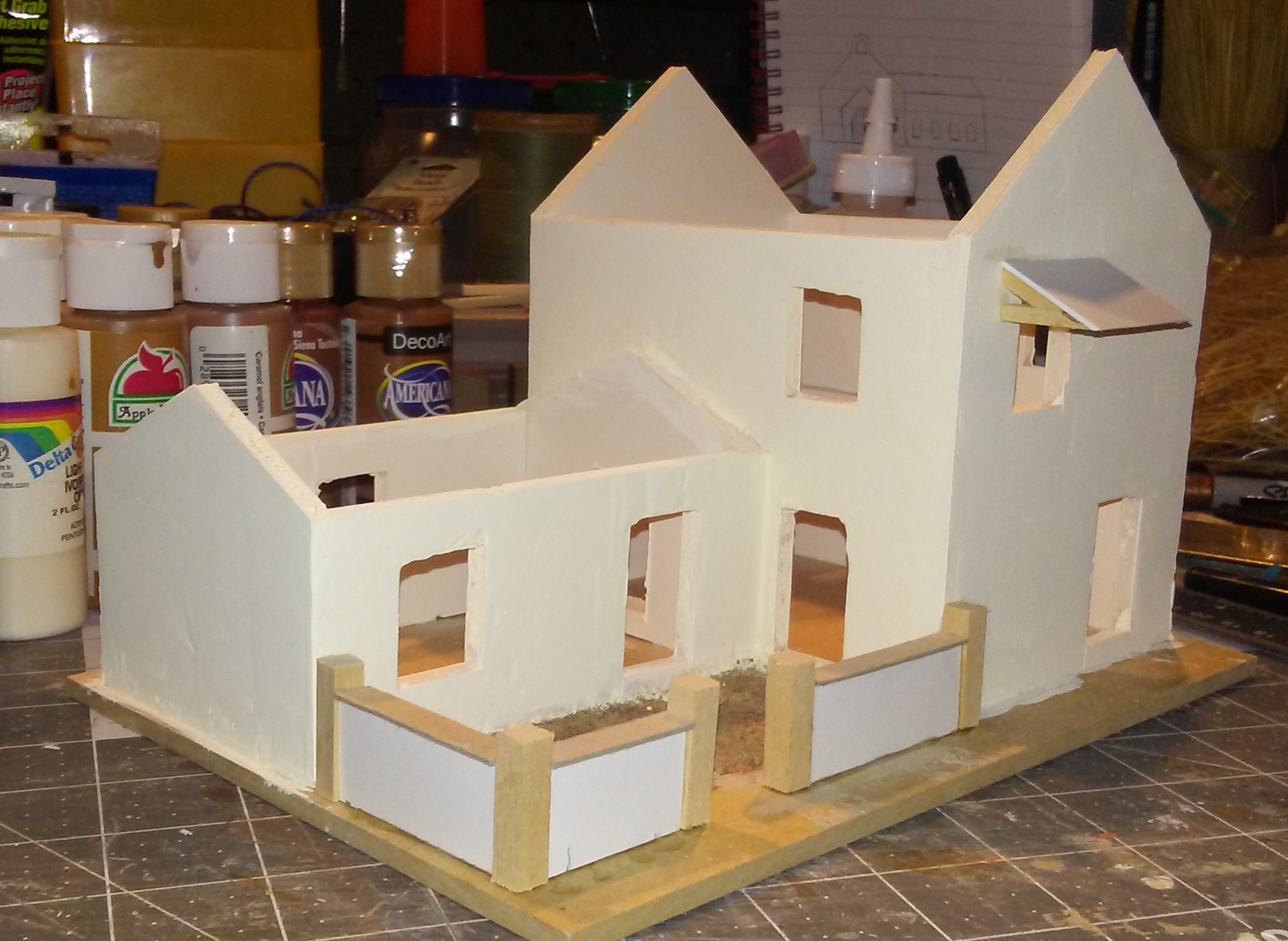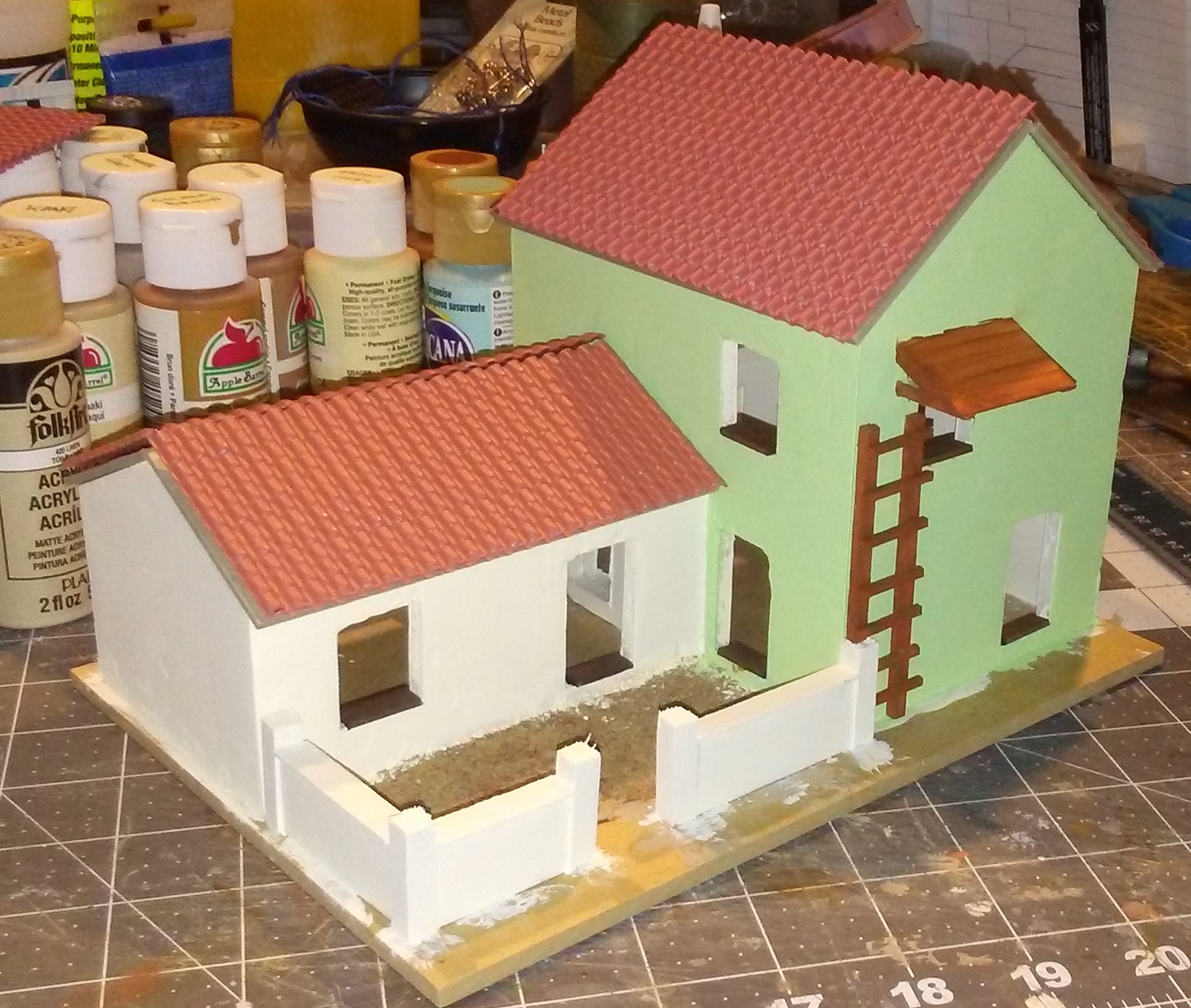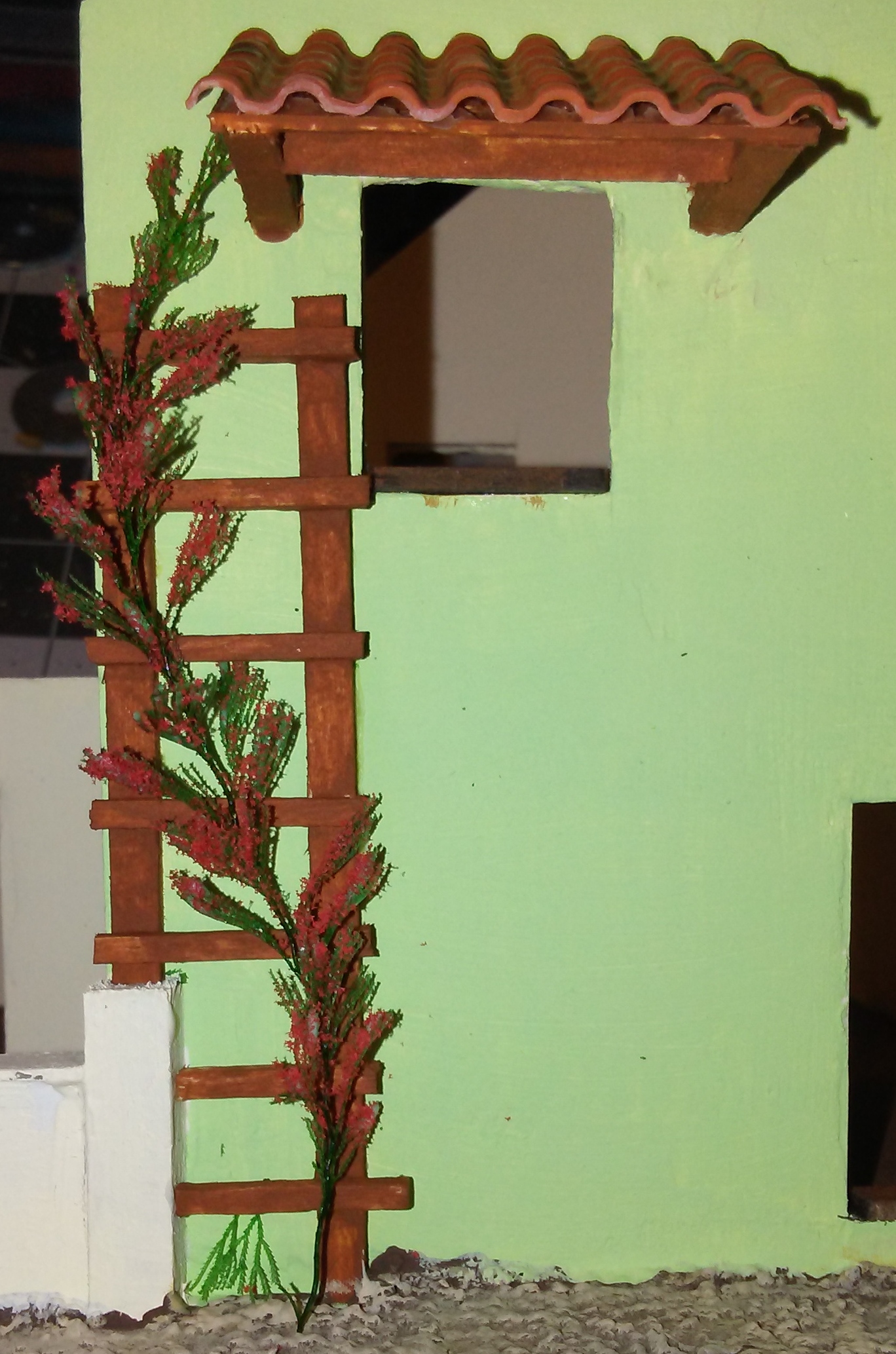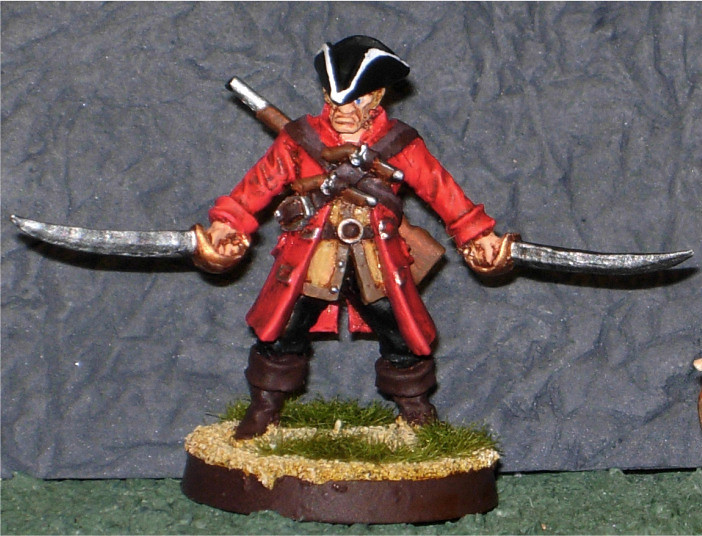I'm in the process of building an arena table for it, but in the meantime I picked up a starter box. Thos of you that know me and my passion for Vikings, will not be surprised that I chose the Zephyri. This faction comes from the fringes of the Empire, and is a blend of Norse and Native American aesthetics. Couple that with the fact that the Zephyri Starter Box comes with one of the best looking models (in my humble opinion) for the game, and for me the choice was easy.
 |
| Zephyri Starter Box |
The models are all completely resin (with one exception that will be noted later) and as a consequence the package is extremely light. I must admit, I felt strange about paying $50 for a box that felt empty.
So, given that the box is certainly NOT empty, what does it contain?
 |
| Contents of the Zephyri Starter Box. |
Inside the large bag are three models and various game aids and cards:
- Frigge
- Bjarrhvit
- Sven
- Three 4x6 art cards
- Three game cards
- Three plastic Arena Rex bases and tokens
- Zephyri Benefits card
- Pit hazard card
 |
| The card contents. |
The three art cards are beautiful. Of course they're not used for the game itself, but they're really nice to have. Each figure also comes with a stat card for use in the game, which details its characteristics, damage output, special abilities, etc. There's another card with special rules detailing the benefits of running a Zephyri cohort (if at least 75% of your cohort comes from this faction, you get bonuses). Lastly, there's a square card with a pit hazard. I'm planning on modeling an arena with actual pits carved into the floor, so do not have a need for it, but it is a neat addition to the set and lets you place additional pits anywhere on the board.
Of course, the real stars of the set are the figures! So, what do they consist of?
 |
| The figures, bases and fatigue tokens. |
Each figure comes individually bagged, and is accompanied by a plastic base and a plastic fatigue token. Including the tokens is a nice touch. The tokens are double sided (one side is used for a character that is fatigued and the other for an exhausted figure). The bases are, well, basic. This set comes with two 300 round bases for Sven and Frigge, and a 40mm round base for Bjarrhvit.
Since Sven is the most Viking-looking figure in the bunch, it's not a shock I chose to start with him. Plus, he comes with the fewest parts so I (rightly) thought he'd be the easiest to assemble.
 |
| Sven |
He consists of the main body, a hand holding a sword and a hand with a spear (the spear hand is metal - the only metal piece in the set). As you can see in the photo above, the resin cast had a lot of tiny, feathery flash (this was present on all the casts). It does not impact the overall quality of the cast, but it is annoying to get rid of.
 |
| Sven, ready for gluing. |
I am a bit particular about my figures, so I decided to pin Sven in place on the base. I also pinned his hands. For those that are not familiar with the process, pinning is a simple means of getting a stronger joint between parts.
First drill a small hole in the parts you want to glue together. It is important that the holes line up exactly. You put a drop of superglue in one hole, following by a small piece of wire. You clip it close, creating a small pin that fits into the hole on the other part, then you glue it in place as well. The figures had small resin pins, but they did not provide as strong as a join as I wanted, which is why I went ahead and pinned them for strength. (My figures tend to take a beating, literally as well as figuratively.)
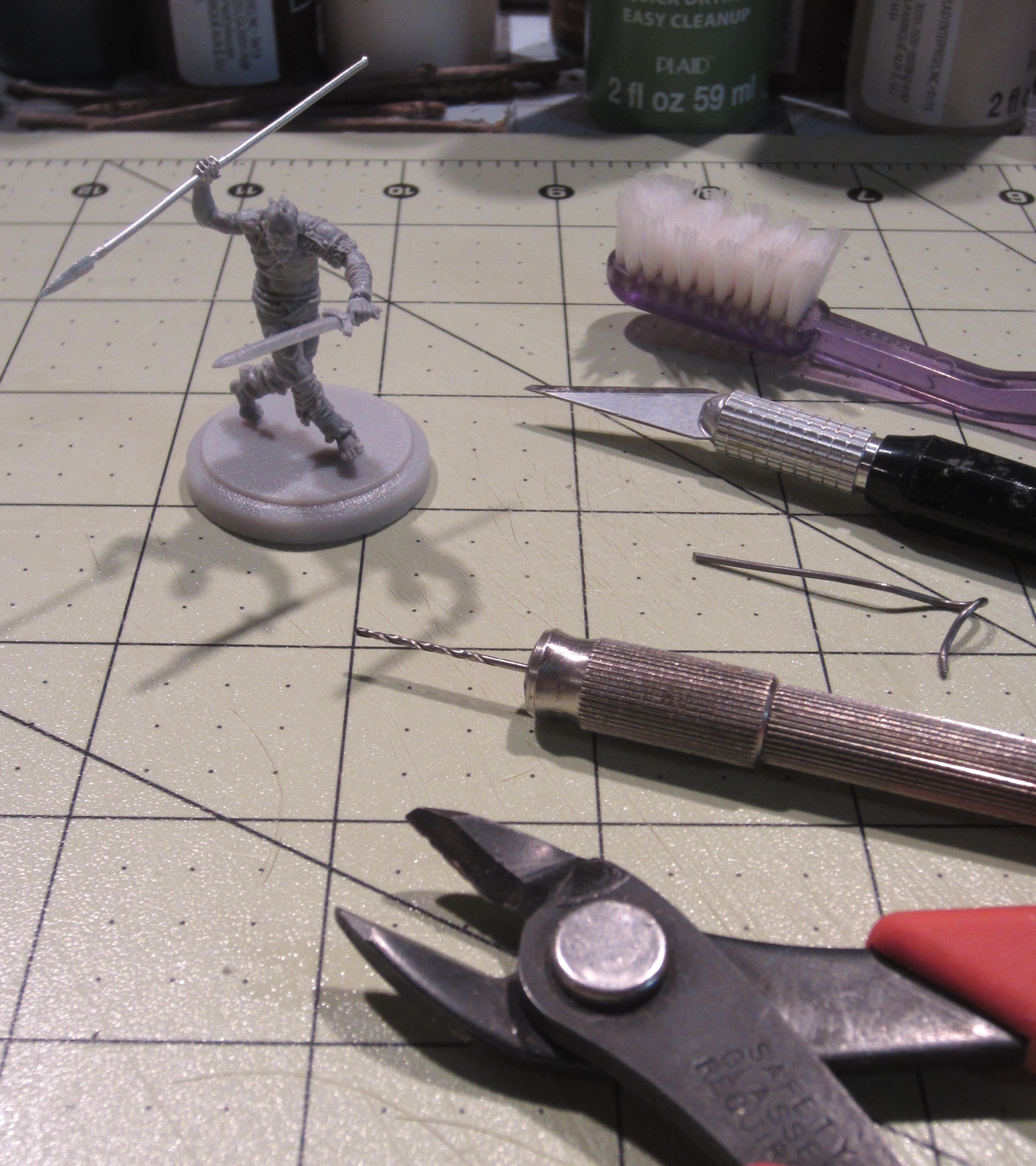 |
| Tools used to assemble the figures. |
The photo above shows the tools I used in assembling Sven and the other figures. From bottom: clippers to remove the parts from the sprue; a pin vise with a small drill bit used for pinning; a small piece of wire to serve as the pin; a craft knife for removing flash; a toothbrush, which I found quite useful in removing the very small bits of flash.
And here he is: Sven in all his glory!
 |
| Sven (left) and a Gripping Beast figure. |
I put Sven next to another figure to show the difference in scale. The figure on the right is a Gripping Beast model from their Pagan Rus boxed set for Saga. As you can see, Sven is clearly head and shoulders above the Rus figure. You can also appreciate the wonderfully intricate detail of the resin casting as well.
Next up - Frigge. I made another assumption (this one incorrect) that the most complicated model to assemble would be Bjarrhvit since she is the most impressive in the box. Frigge is a beautiful figure that consists of several small, fiddly parts that I found to be a nuisance to place properly.
 |
| Frigge |
The casting has the same feathery flash, though there was less of it. I had to make use of the excellent photos on the Arena Rex website for reference, as I was not certain exactly where all the feathers and braids went. As I did with Sven, I pinned the hand holding the axe. Frigge's leg and left arm fit very nicely without pinning, so I just used superglue. There's feathers that go on the shield, which were easy to place. On her head she has a braid in the back that's a separate piece, as well as a small braid with feather and a larger group of feathers that go on the side of her head. With patience, super glue, and a little green stuff, I got the parts placed properly. Once the green stuff dries completely I will clean up the joints.
 |
| Frigge - this is a beautiful model! |
That left the big boss, Bjarrhvit.
 |
| Bjarrhvit |
Bjarrhvit consists of the main body, both arms, and the single most detailed piece in the set - her gorgeous braided polar bear cloak.
Likely because of the complexity of the cast for the cloak, this is the piece that had the most issues in the set I bought.
 |
| Tip of one braid broken off. |
The very tip of the longest braid was broken, as you can see in the detail insert above. To me, this is not a big deal as the braid still flows elegantly and will look great. No one will even know the tip is missing.
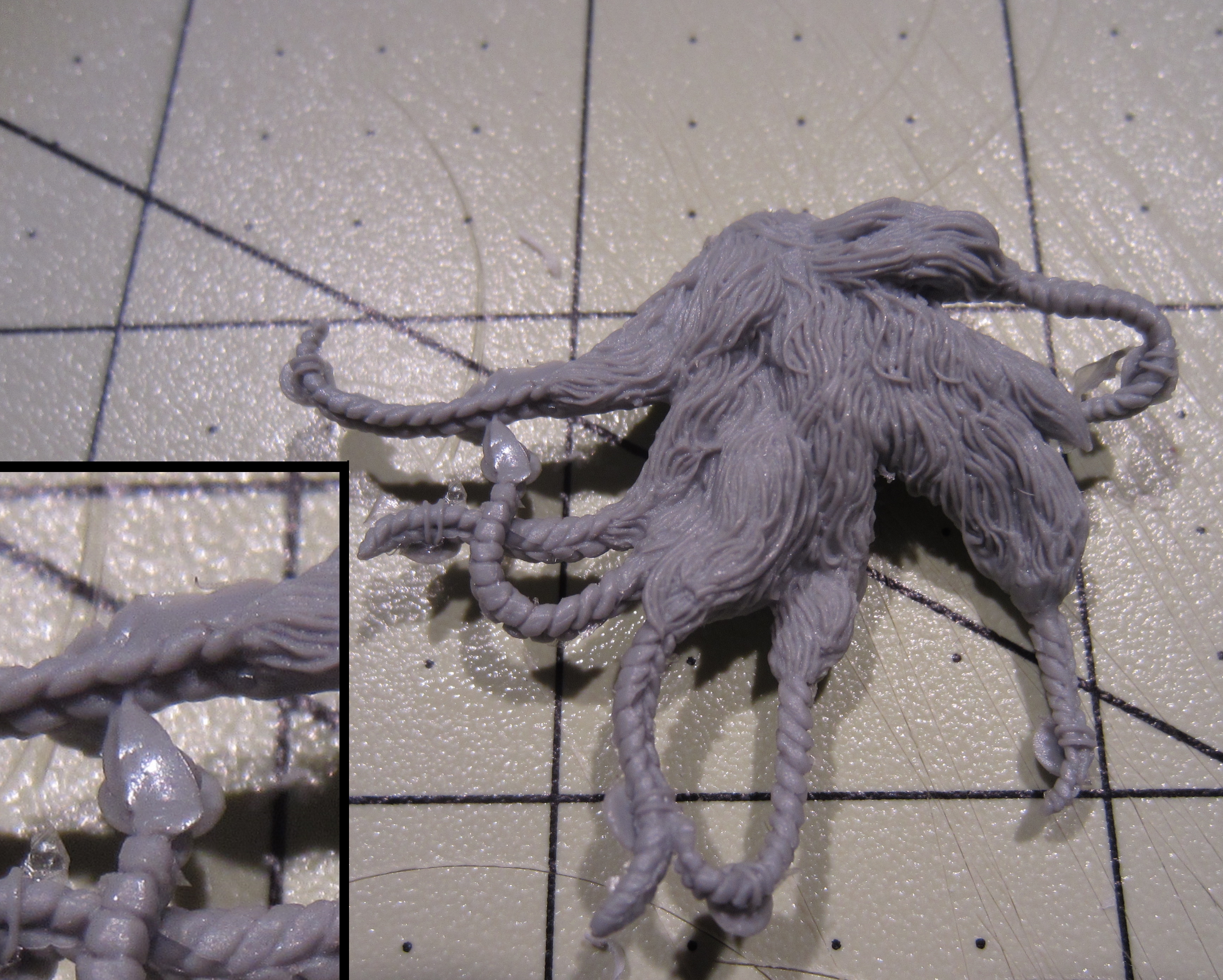 |
| Miscast tips of other braids. |
The end of another braid was miscast, looking more like a spearpoint, and the braid that it connected to had quite a bit of flash right beside where it met the sprue. (Again, see insert photo above.) I cleaned these up, but the area where I removed this flash lacks detail. In the scheme of things, this is not a big deal, as there is so much going on with Bjarrhvit's cloak I doubt anyone will notice these small marred areas.
 |
| Completed Bjarrhvit. |
Above you can see the completed Bjarrhvit. I did pin her right arm, but her left arm fit perfectly with the small resin positioning nub provided. I am certainly not the best figure painter, but I am looking forward to painting these (Bjarrhvit in particular). The amount of detail in these casting is very impressive.
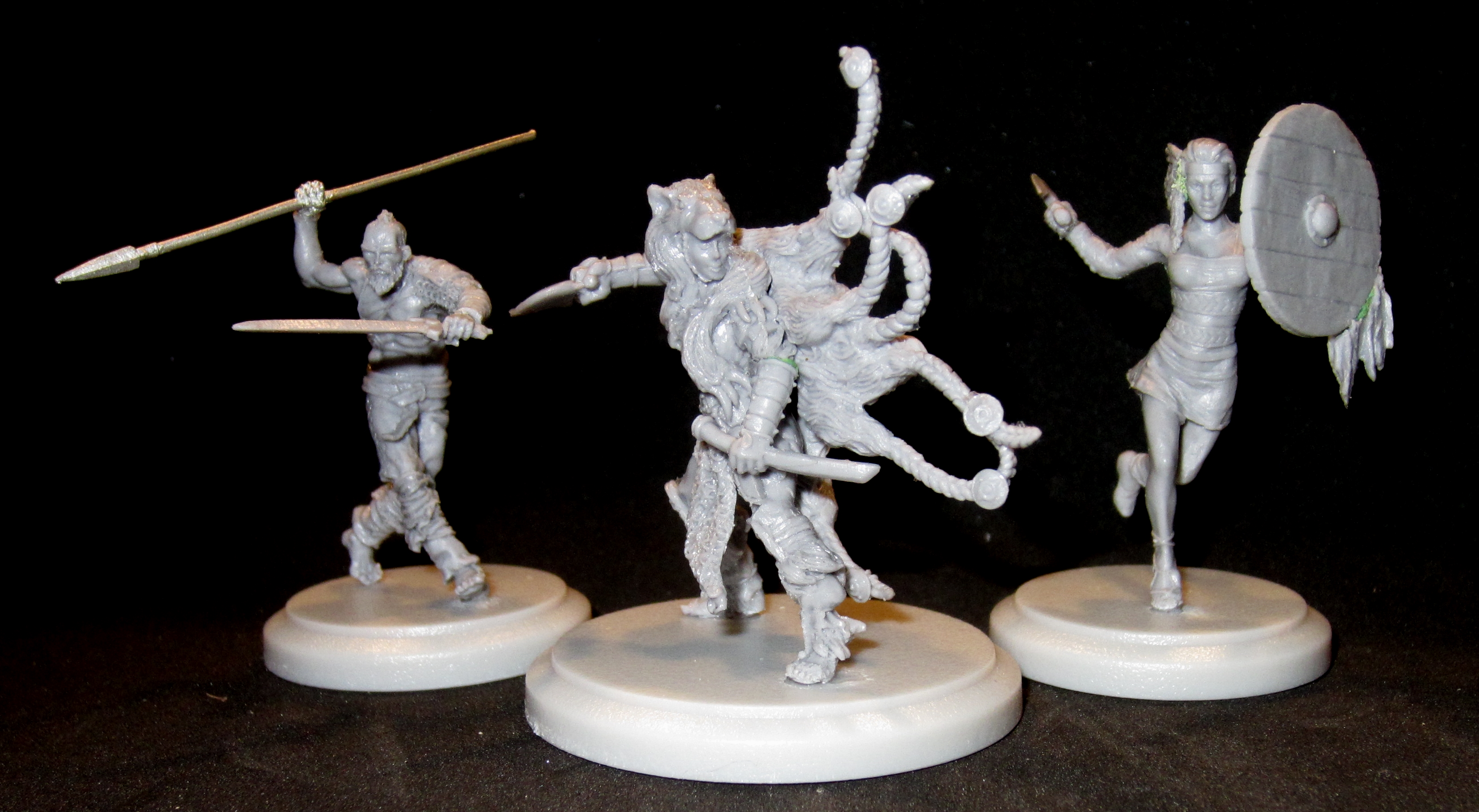 |
| The gangs all here! |
The game can be played with cohorts made up of any number of figures, but the rules recommend groups of three to start. This boxed set provides that, along with all the accessories needed to play.
My verdict:
| 9 out of gladiators approve! |
I gave this set 9 out of 10 gladiators.
First of all, the cards (both the art postcards as well as the game cards) are quality products. They look great and are printed on thick, glossy cardstock. The printed pit was a nice bonus. The plastic fatigue tokens are basic, but functional, and will serve their purpose well.
While those accessories are nice, it is the figures that people buying this set are really after, and I must say these figures are amazingly detailed and wonderfully sculpted. The poses are very dynamic. Sven's description from the Arena Rex website says he is "a patient warrior who favors maneuvering around his opponents and exhausting them before closing in for the kill." His pose shows exactly that, as he appears to be circling his victim. Frigge is poised in mid-step, charging with her shield held high and her axe ready to strike. Bjarrhvit's pose is magnificent, with the highlight of course being the flowing cloak, with the braids whipping around her.
I mentioned the small issues I found with the castings. While admittedly minor, I did think they were worth mentioning, especially with the price of these figures. They're definitely on the upper end of the price scale (leaving GW out of the equation), and I would have liked to see a little less flash. The starter box is a very good value, saving you about 20% compared to the cost of the individual figures. And in the starter box you get the Zephyri cohort bonus card and the pit.
Overall, I'd recommend this set to anyone interested in getting started in the game, as well as modelers looking for beautifully sculpted figures to paint. I can see these all as display pieces as well as playing pieces.
I have yet to see how this team performs in actual combat (hopefully a future post will discuss that), but any figures that make me this eager to get them painted up and on the table as soon as possible are worth their cost!
'Til next time!
